London Film Festival Review: The Personal History Of David Copperfield
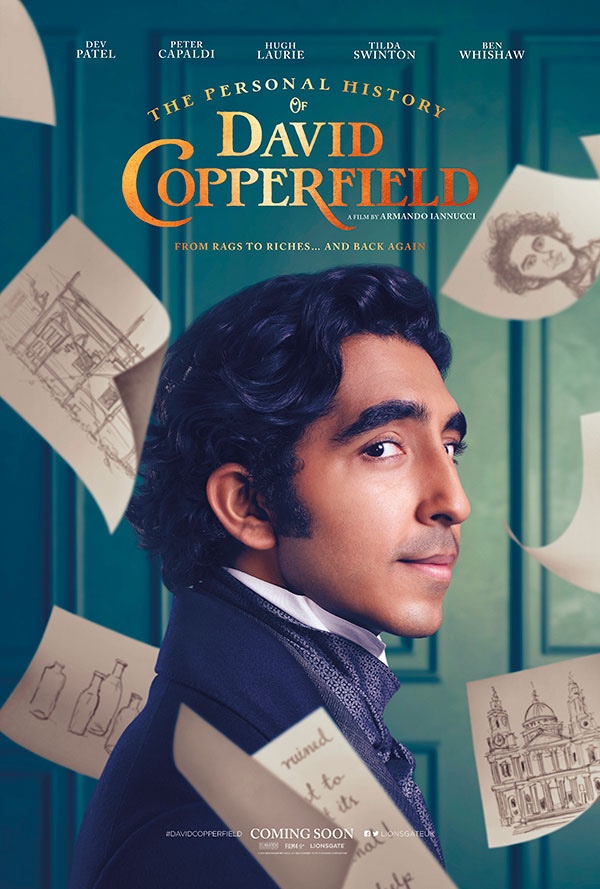
The Pitch: What? The Dickens?
The Review: Modern society is desperate to work out what kind of person you are. But beware, it has only a few descriptions with which to allow you to be labelled. Complexity be damned, on any issue of the day you’ll be lucky if more than two opinions are permissible. The United Kingdom is being inexorably drawn into a time when you must be in favour or opposed to everything. Never mind leaving the European Union, it doesn’t feel as if you can be ambivalent to Marmite these days. Love it or hate it? Them’s your choices, don’t darken this door again with mild admiration or moderate disgust.
Armando Iannucci arrives at his latest film bearing the label of ‘political satirist’, and while it’s a fair description to a point, it comes riding in on an unspoken implication that he’s incapable of anything else. Let’s dispel that label for a start; while it’s true he’s responsible for some of the most scathing, hilarious and unfortunately accurate commentary of the last couple of decades, at the heart of it teems a desire to understand people, to sympathise with the unfortunate and to stare disbelievingly at the grotesque characters that reflect the wider world.
On that basis, it should come as no surprise that Iannucci finds the works of Charles Dickens appealing. Dickens was to the social classes of his era what Iannucci is to the chattering politicians of ours, and their worlds are similarly populated by absurd, outlandish characters that repulse and delight in equal measure. Iannucci and his regular co-collaborator Simon Blackwell have plunged headfirst into Dickens’ world and come up with an adaptation of the writer’s most personal work that feels fresh and vibrant.
Let’s talk about another label that’s cropped up in coverage of this film: “colour-blind”. It’s an odd, almost derogatory term that suggests there is some issue in casting the best people, even if they don’t all conform to the standard casting call for a period picture. How about “meritocracy” instead? The film’s casting is generally applaudable and even the smaller roles are often filled out with faces such as Gwendoline Christie and Paul Whitehouse whose talents brighten even the slender amount of screen time they’re granted.
In being fairly faithful to Dickens’ plot structure and character roster, it also allows for a number of larger roles to make their mark. Chief among these are donkey-obsessed aunt Betsey (Tilda Swinton) and her Charles I-obsessed living companion Mr Dick (Hugh Laurie). Swinton gets to mix her initial brusqueness with a pleasing warmth as time passes, and Laurie’s initial fragility gives way to a mannered, boyish charm, both of whom prove ideal foils for Copperfield and the menagerie of other characters. Peter Capaldi’s Micawber also brightens every scene he appears in, and the comic timing of not only these three, but most of the cast, is so exemplary you could set your watch by it.
There are but two minor disappointments: Ben Whishaw’s obsequious Uriah Heep sneers from under his bowl haircut but never quite provides the foil to add great drama, which the film needs to balance the whimsy and otherwise excellent character work. The other is Copperfield himself, and that’s nothing to do with Dev Patel’s strong, evolving portrayal, more that Copperfield feels absent from the centre of his own story, despite being almost constantly on screen.
It’s structure where this adaptation struggles, with the social observation and coterie of contemptuous figures that flit in and out of David’s life present and correct, but never quite the sure footing of narrative to keep the audience fully invested. Iannucci and Blackwell have softened a few of Dickens’ sharper decisions, partly to allow Copperfield to comment on his own story as he develops as a writer. But devices like this don’t feel as if they carry a full commitment, and the visual trickery of hands reaching into drawings or the story projected on walls is forgotten about for a long stretch in the first half. The gimmicks don’t elevate or elucidate the story in any way, and a stage bound framing device might offer a further connection to Dickens but also feels oddly out of place.
The Personal History Of David Copperfield is very keen to work out what kind of person its hero is, but it’s slightly less sure as to how it’s going to go about it. If I were to offer a few labels to apply, they’d include “delightful”, “heart-warming” and “refreshing”. If the whole isn’t quite the sum of its parts, the parts are still worth parting with two hours to enjoy.
Why see it at the cinema: Glorious scenery, with Iannucci making the most of a variety of parts of the British countryside, and a film that does offer a lot of laughs, so is best enjoyed with as much company as possible.
What about the rating? Rated PG for mild violence, threat and brief bloody images. Absolutely fair and nothing to concern most ages.
My cinema experience: The first gala press screening of the 2019 London Film Festival, so I joined several hundred other critics and industry types for an early morning screening. After a year off while it was refurbished, the Odeon Leicester Square once again plays host to such screenings, and I took a reasonably comfortable reclining seat on the front row of the balcony. Also nice to see that the cinema had opened the coffee bar early so I took advantage of a latte and a decent chocolate muffin for breakfast.
The refurbishment has reduced the capacity from around 2,000 to just 800 but both the environment and the seating are significantly improved. The same cannot be said for the audio-visual experience: angles from wide seats are a little improved but the audio is still sometimes muffled by the cavernous space, with quiet dialogue being a particular issue. I passed an engineer on the way out with a Dolby laptop, so I’m hoping the later public screening may have been tweaked slightly.
The film itself represented a slightly odd experience: the stalls were full, and while the film got a number of big laughs from down below, there was an eerie silence from the assembled masses in the balcony. Not everyone’s cup of tea, I guess.
The Score: 7/10
The Oscars: A Guide To What’s Actually Best Picture 2017
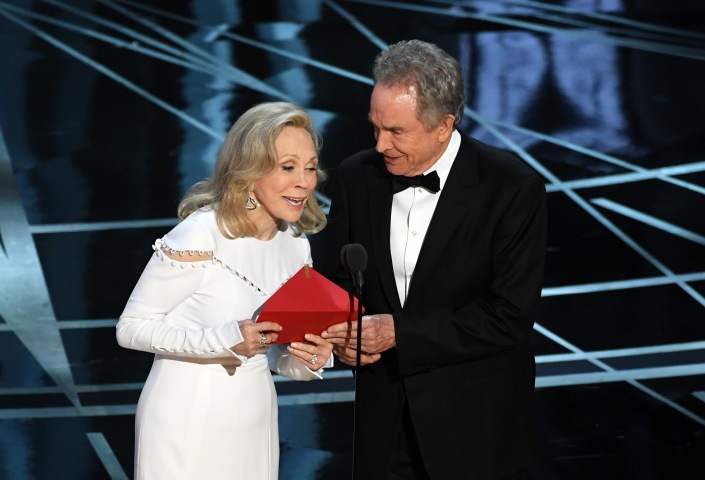
Oh hai, readers. It’s that time again. Tuxedos are being rented, fashion designers are rubbing their hands together with glee and retailers of gold polish in Hollywood are experiencing their annual upturn in sales. In just a few short hours, two dozen individuals or groups of people will be in receipt of a bronze paperweight plated with gold, and will then forever be referred to as “Academy Award Winner” in any future publicity material. I’ve long since given up on sitting up for the Oscars while they’re on – this year I have further mitigation in the fact that I’m at paid work tomorrow, for the first time in nearly a year – but I can never manage the disappointment that comes with films that I’ve formed a personal attachment to coming away empty-handed.
This well-dressed parade of injustice used to cause me to dislike the Academy Awards and their ilk for quite a few years, but I’m rather more at peace with it now, not least because I see the benefits of a box office boost to a film’s time in cinemas. Since my reason for starting this blog was to encourage people to see more films in cinemas, anything that can achieve this end can’t be all bad in my book. But I can’t help but feel that, this year more than many in recent years, the best film is likely to miss out, despite being a favourite of many more lauded and respected critics than yours truly.
But we’ll get to that. First, a gentle reminder of how the biggest film prize of the year is whittled down. Any motion picture, of more than forty minutes in length, shown for seven consecutive days at least three times a day (including one evening showing) in Los Angeles County, and advertised to the public by normal processes, between January 1st and December 31st 2017 can be considered as the best film for 2017. This year that’s given us 341 motion pictures that have to fight it out for the title of Best, and those competing can be a little confusing to British cinema fans. Not just for the fact that films like Lady Bird have only just arrived in cinemas, but for the fact that Paddington 2 won’t be eligible until next year, and David Brent: Life On The Road is one of the eligible films, despite being in UK cinemas eighteen months ago.
Anyway, I’ve been through the list, and I can tell you that of that 341, I’ve managed to see over 140 of them, with a handful more due in British cinemas in the next couple of weeks. One year I’d love to be able to say I’d seen them all, and could pass a truly informed opinion on what the Best Picture is, but given that this year I’ve seen My Little Pony: The Movie (eligible), I’m prepared to take a pass on the other 200 and assume that the cream of the crop can be found in what I’ve managed to view already.
So, firstly here is the breakdown of the films that would have been on my longlist had I been putting together a Best Picture rundown:
10/10:
Baby Driver; Call Me By Your Name; Coco; Dunkirk; Foxtrot; Lady Bird; Phantom Thread; The Killing Of A Sacred Deer; The Shape Of Water
9/10:
Blade Runner 2049; Brawl In Cell Block 99; Chasing Coral; Dawson City: Frozen Time; A Fantastic Woman; Lady Macbeth; Loveless; Okja; Personal Shopper; Raw; Star Wars: The Last Jedi; Thelma; Three Billboards Outside Ebbing, Missouri
Cast me away on a desert island with that lot and I’d be a happy man for quite a while. But we’re in the business of finding the top 1, not the top 22, so you need to know what would have made my list.
So if I’d had to make a nomination list of nine to match the Academy’s, then my 10/10 choices would have filled it out quite nicely. The personal disappointment starts here, in that the Academy and I could only agree on five out of the nine: of those that didn’t make it in, I can only presume that Coco was too animated, Foxtrot too obscure (Israel’s submission for Best Foreign Language got only to the top nine of that category, not to the final five), The Killing Of A Sacred Deer too wilfully odd and Baby Driver too general entertainment (and also too lacking in a major supporting role for Christopher Plummer, if you get my drift).
But five out of nine is not bad, and for me represents the strongest year since the 2010 awards, the last time I would have given five of the nominees a 10/10 rating. Here though, for the avoidance of any doubt, is my official ranking for this year’s awards in reverse order of appreciation.
The Least Best Picture is Darkest Hour
It might be about to give Gary Oldman a first Best Actor award – which, as so often, is richly deserved but probably not for this role – but this generic biopic is all bluster and little subtlety, and this comes from someone who’s a founder member of the Joe Wright Appreciation Society, for his work on the likes of Hanna and Anna Karenina which I am willing to bet money I liked more than you did. This, though, feels the most awards-baiting entry of the nine nominees available.
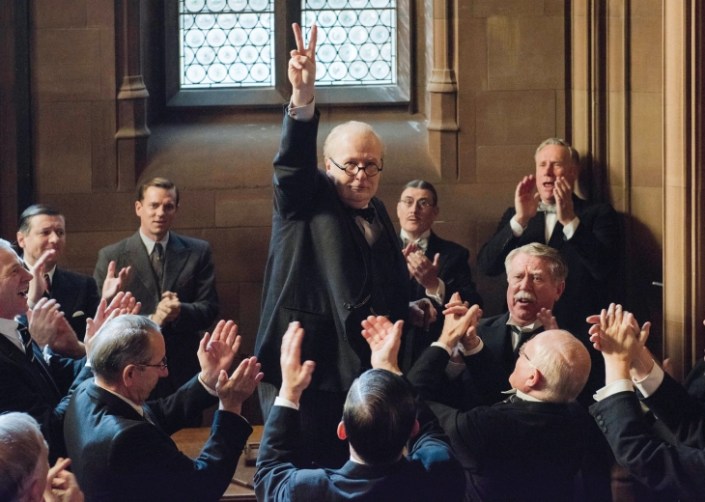
Which Is Not As Good As The Post
It’s good, solid, reliable Spielberg delivering yet another good, solid, reliable Oscar contender, but one that falls slightly short in the drama stakes compared to its journalistic relatives such as All The President’s Men and Spotlight. Nice to see Thanx and Meep (as I would hope she would sign herself on Twitter) sharing a screen though.
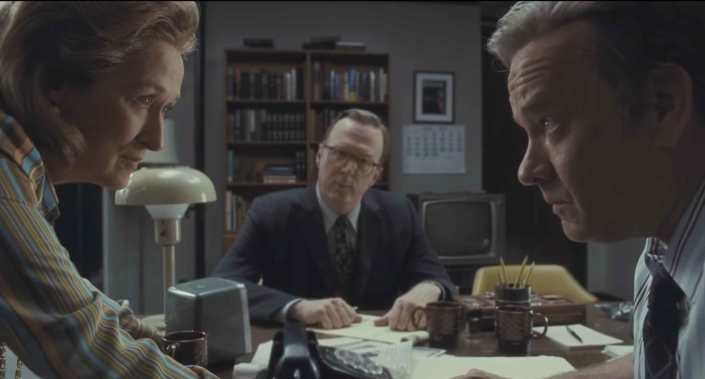
Which Is Not As Good As Get Out
Controversial opinion of the year: I think Get Out is a great film, I think it’s the most important film of the year in many ways, I would instantly list Jordan Peele as someone whose next film I would watch with no prior knowledge of content or talent involved – but, despite a satisfying ending that deviates from expectation, I did find that the film lost its way in the last half hour or so, and there’s just occasionally a lack of subtlety that I think will come in Peele’s next films.
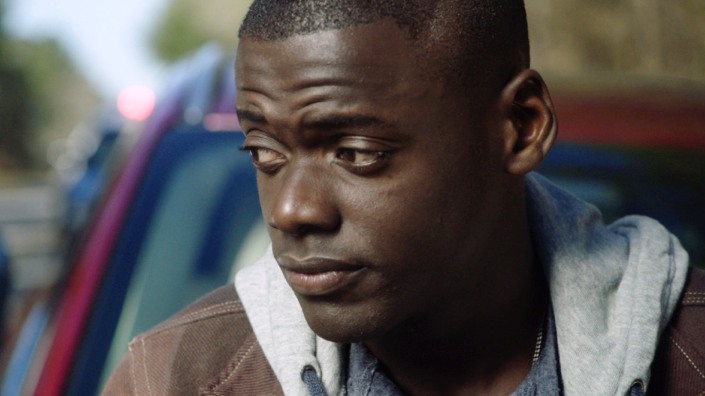
Which Is Not As Good As Three Billboards Outside Ebbing, Missouri
Now that the go-to way to hammer home your message appears to have become renting three billboards, decking them out with similar posters, and driving them to the location of a tragedy, it’s no wonder that Three Billboards is at the top of public consciousness right now. Given that Martin McDonagh is still using Peter Dinklage to make short people jokes, nearly a decade after In Bruges, I’m still now quite sure how this walked off so easily with the Golden Globe and the BAFTA. I don’t think we need to have our film characters held to the same moral standard as the people who act in them or who hold political office, but I can also understand why that moral ambivalence has made a few people uncomfortable.
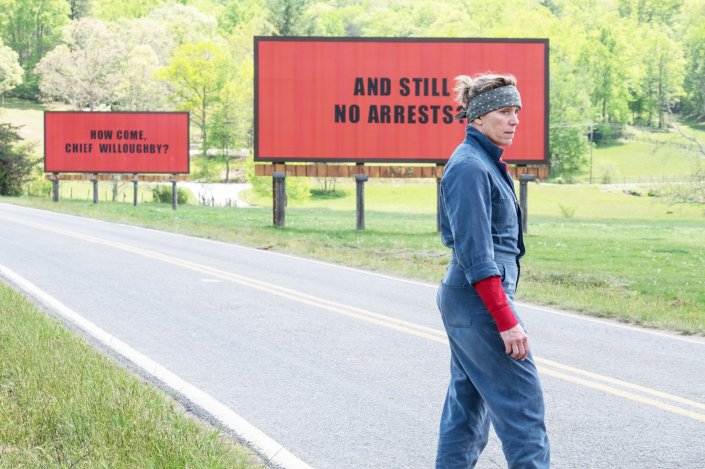
Which Is Not As Good As The Shape Of Water
It might just be Pan’s Labyrinth 2: Electric Merman Boogaloo, but that doesn’t stop The Shape Of Water being an utter delight. Sally Hawkins should immediately be given a damehood, the freedom of anywhere she likes and free ice cream for a year for her magnificent performance, and the cast around her are equally impressive. It’s just the occasional feeling that more could have been done with Michael Shannon’s grotesque baddie that keeps this further from my top spot.
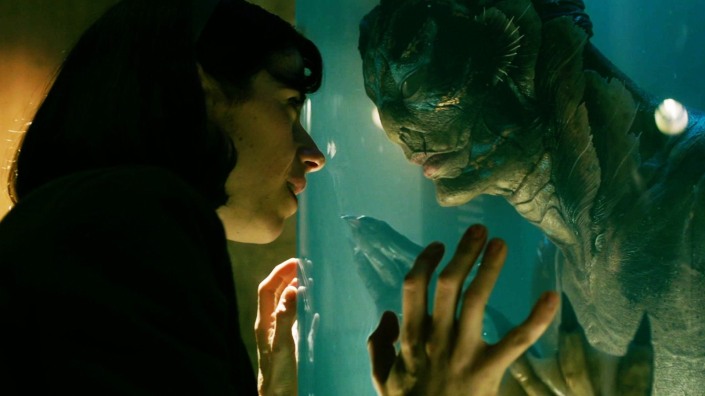
Which Is Not As Good As Dunkirk
If I’m a Joe Wright fan, then I’m practically at the level of stalker for Christopher Nolan. Putting aside the disappointment of Interstellar, he eschews movie stars and manages an intimate focus on three different aspects of war. He’s also convincingly selling us a war film about a retreat and a relative defeat, but finding the spirit without being jingoistic. I do wish I hadn’t enjoyed watching the dogfight sequence in 4DX quite so much, though. (Wheeeee!)
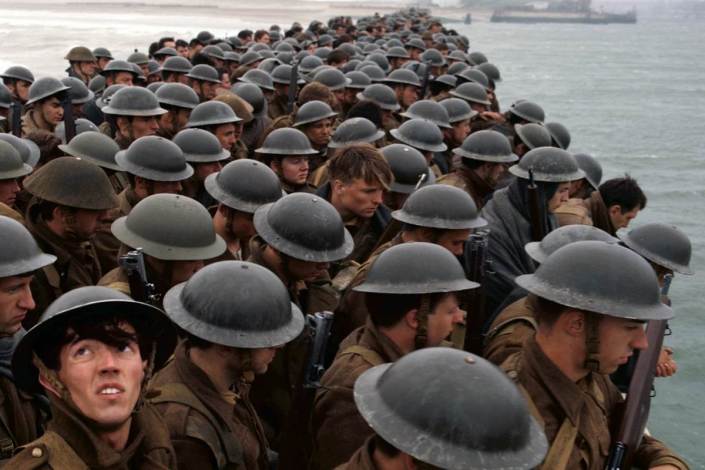
Which Is Not As Good As Lady Bird
I believe that Noah Baumbach, Greta Gerwig’s partner, offered to direct this when Gerwig was developing it, but Gerwig decided to make it herself. Based on this, she should offer to direct his next ten films, as she’s much, MUCH better at it. Its greatest trick is the quick cut montages which offer all of the detail and emotion of major events in short bursts, but I wouldn’t want to sell short the performances or the magnificent script, where not a single word feels superfluous.
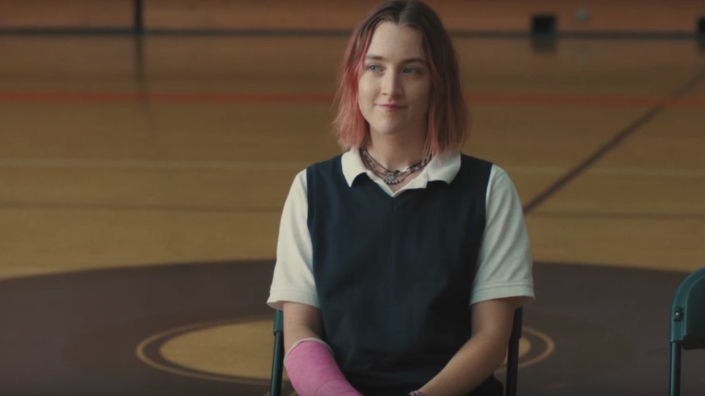
Which Is Not As Good As Phantom Thread
I keep a spreadsheet which records every film I’ve seen in the past ten years, and that also enables me to track the record of any director over that period. Paul Thomas Anderson has now become the first director in that decade to deliver four bona fide masterpieces (There Will Be Blood, The Master and Inherent Vice being the preceding three). This might just be the best of all of them, and it’s as immaculately constructed and utterly beguiling as any of its lead character’s creations. Vicky Krieps was properly robbed of a Best Actress nomination, though – hurry up and retire, will you Meryl?
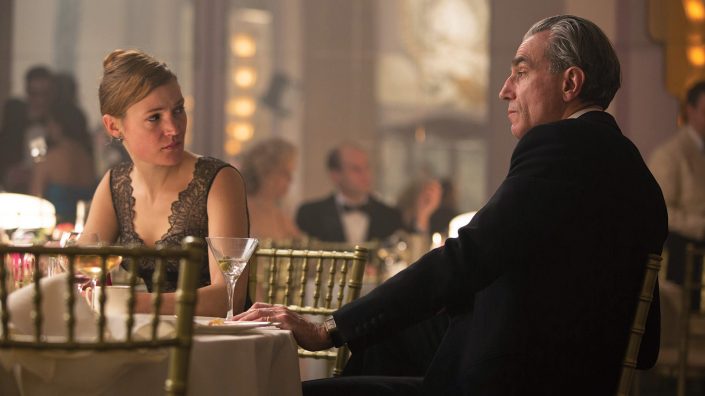
This, of course, means that…
The Best Picture Of 2017 is Call Me By Your Name
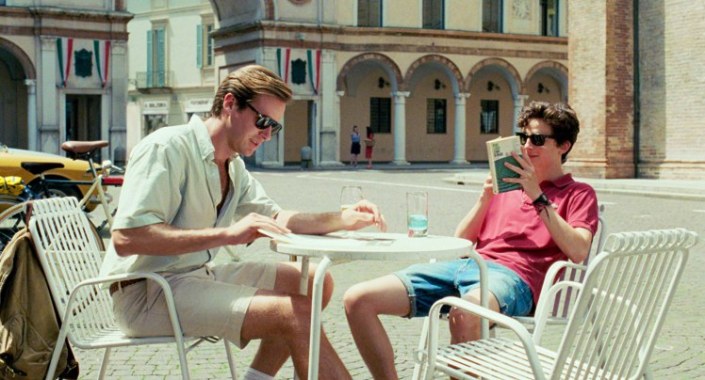
I don’t think this is going to win Best Picture. If I get up for work in eight hours to discover it has, it will be a moment as beautiful as a Michael Stuhlbarg monologue at the end of a gorgeous Italian summer. I’ve seen this twice in a cinema and found myself even more mesmerised by the film’s beauty the second time, and I do believe that Luca Guadagnino’s work as director is one of the film’s most underappreciated assets, Best Director nomination notwithstanding. (The blocking and placement in the fountain scene alone gives me goosebumps.) I just hope talk of a sequel is unfounded, some perfect moments can’t and shouldn’t be replicated.
So that’s it, my list of the nine nominees in order for another year. To finish, please find my increasingly squashed scorecard of the decade so far, since the nominations expanded, to see how this year’s ratings compare to years past. And if you’re watching the awards, just remember that it’s only an awards show. Have fun.
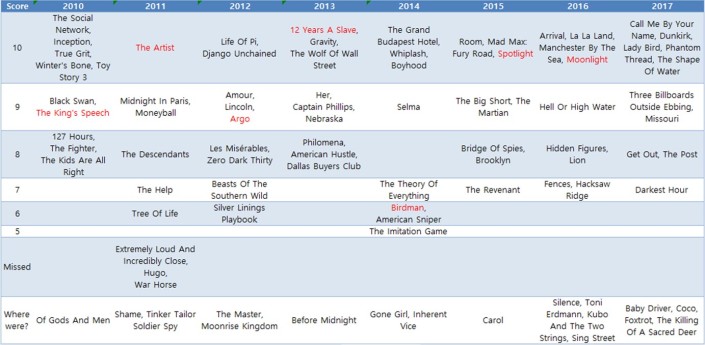
London Film Festival Review: Battle Of The Sexes
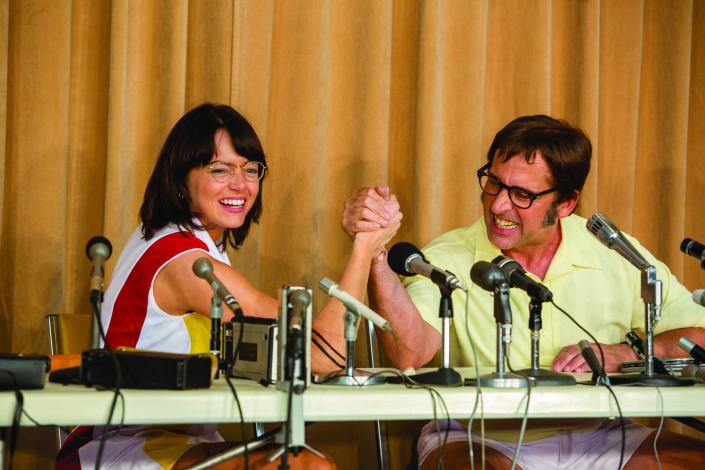
The Pitch: Fifteen-love. (In other words, I’ll get fifteen grand, you get us a drink, love.)
The Review: Despite loving to watch all kinds of it – I’ve taken two weeks off work to watch the Olympics before now – I was terrible at sport at school. In seven years of grammar school I played rugby matches for my house’s C-team, one match for my house’s D-team at cricket before I was substituted at half time and never played again, and was so bad at athletics I once finished a race to discover the teacher had given up and gone in. We did have tennis courts but I never came close to picking up a racket, knowing that I would have comfortably been the worst in my year, or possibly any year. Serve and volley? I’d be happy to accomplish 50% of that. Once. Of course, I went to an all boy’s school, so maybe I’d have had a match at a mixed school.
Don’t worry, I’m not a raging chauvinist, clearly all of the girls would have beaten me as well. (A one-armed monkey with one arm tied behind its back could have given me a decent game, but let’s not go there.) But these were the attitudes prevalent in tennis back when I was born in the Seventies. It’s been an ongoing struggle for women since then to get to parity with their male equivalents. Take, for example, the view that “… our men’s tennis world, the ATP world, should fight for more, because the stats are showing we have more spectators” and that “…[Ladies’] bodies are much different than men’s bodies. They have to go through a lot of different things that we don’t have to go through… You know, hormones and different stuff.” That would be depressing enough coming from the mouth of a misogynist Seventies tennis pro, but it was actually said by former world number one Novak Djokovic in 2016.
The new film from Jonathan Dayton and Valerie Faris (LITTLE MISS SUNSHINE, RUBY SPARKS) takes us back to the dawn of a revolution in tennis. Billie Jean King was at the top of her game, five-time Grand Slam winner and world number one, but when her frustration at the gap in tournament pay became too great, she and eight other tennis professionals broke away to form their own tournament. When hearing of this, retired champion Bobby Riggs, now in his fifties and addicted to gambling, challenged King to a winner-takes-all match to prove even an older man could comfortably beat a top woman. When King refused, fellow professional Margaret Court stepped in but after being handed a thrashing by Riggs, King had no choice but to step up to defend the honour of all women on the court.
Whether you’re male or female, BATTLE OF THE SEXES represents excellent value for money as it’s three films rolled into one. The first of those is the gender inequality battle, pitching Emma Stone’s King against Steve Carell’s Riggs. This film is broadly comedic, playing to Carell’s strengths as hustler Riggs becomes emboldened by his seemingly effortless superiority. Stone has to butt heads with chauvinist-in-chief of the tennis tour Jack Kramer (a typically smarmy Bill Pullman) while supported by Gladys Heldman, who gets sponsorship for their new ladies’ tour and backs King’s activist impulses. The only real quibble is that Stone’s King feels oddly passive at times, undoubtedly committed to her cause but the fervour never really rising to the surface.
It’s the second of the three films mixed in here that’s the most compelling, where King explores feelings for her hairdresser Marilyn, despite being on the surface happily married. It’s a time when taboos of gender can easily be confronted, if not so easily broken down, but those of sexuality have to remain firmly in the closet in service of the greater cause. Andrea Riseborough plays Marilyn and hers and Stone’s relationship is tender and their moral dilemmas sketched out believably. The film makes the most of the Seventies setting, from costumes to cinematography, and the warm visual glow afforded to their more private moments justifies pushing the aesthetic as far as possible. Again, if there’s one quibble it’s that King’s husband Larry feels little more than a plot cipher.
The third and final film is the one where we have the biggest problems. For as much as BATTLE OF THE SEXES seems embarrassed by it, it’s a film about tennis, and it’s the sports elements that are by far the weakest. Don’t get me wrong, sports films can sometimes feel desperately predetermined in their dramatic arc, especially when many viewers will already know the result, but the best of them can still give you a thrill and the sporting elements have the feel of someone who’s only ever watched sport on TV and most likely under duress. There’s never any sense of the tactical nous King employed or seemingly any interest in making the tennis more than a distraction; at some points it’s not even readily apparent who’s winning, sucking any excitement from the spectacle served up.
So Dayton and Faris’ film ticks plenty of boxes, satisfying as a human drama, entertaining as a comedy but serving up a double fault when it comes to the actual sport. That said, it should still drive the point home about the continuing disparity in the pay in professional sport; despite the Grand Slam tournaments now paying women and men equally, the top women will still earn about half of their male equivalents, which means that this battle is one that still needs to be fought, and it can just about consider BATTLE OF THE SEXES a worthy ally in that struggle.
Why see it at the cinema: The comedic elements of the film undoubtedly work better with an audience for company, and seeing it on a large screen helps to follow the tennis because it’s all shot statically from above as if on TV.
What about the rating? Rated 12A for infrequent moderate sex. (Don’t worry, the only balls you see are on court.)
My cinema experience: The joys of press screenings at the London Film Festival mean that this film started at 8:15 a.m., for me, when it’s a two-hour journey into London, that’s an early start. Always nice to know that you have the leopard print seats and awkwardly angled screen of the Odeon Leicester Square to look forward to at the end of your epic trek. In particular, the sound can get very muffled at points; it’s a shame that London’s largest showcase for film (with over 1,600 seats) isn’t also its best.
The Score: 7/10
Review: London Film Festival 2017 – Breathe
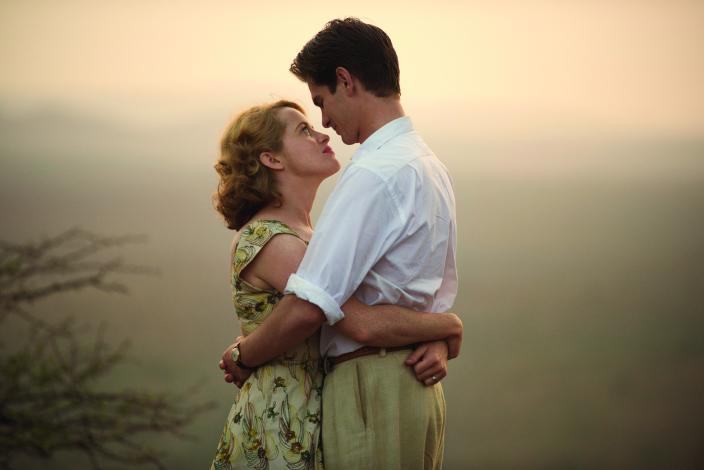
The Pitch: Choose life.
The Review: If you’re looking for a film to open Britain’s leading film festival then as soon as someone offers you more British acting talent than a bonnet full of Jane Austen adaptations, most of them with finely honed RP accents and with an opening scene culminating in a cricket ball smashing a tea cup, then you’d probably bite their hand off. You’d probably also expect that a hard-working British film would be stiff upper lips, struggles against adversity and as grim as Ken Loach’s kitchen sink. Breathe serves up two out of three in a reasonable debut for Andy Serkis, but suffers from never quite being sure what it wants to be.
With a list of British talent longer than your arm, some in blink-and-miss roles (Diana Rigg’s screen credit may get more time than she does), Serkis has certainly assembled a talented acting roster, but the only two who really have the opportunity to do more than reading their lines are Andrew Garfield as polio patient Robin Cavendish and Claire Foy as his supportive wife Diana. When stricken with the illness at a young age, Robin can’t face living a life staring at the hospital ceiling, but Diana takes on the medical profession and enlists the help of a creative friend or two to give Robin a new lease of life.
There’s plenty that works here, with Garfield and Foy putting in strong performances. The script also brings out British qualities you wouldn’t necessarily expect from such a film, with stoicism and determination supplemented by inventiveness and eccentricity. For large parts this is less a grim slogfest, more a vibrant celebration of life and its possibilities, with a handful of satisfyingly off-kilter moments thrown in. While Robin gradually escapes the confines of his hospital bed, the depictions of those less fortunate give the opportunity for some bizarre, discomfiting images, particularly at a clinical hospital that thinks it’s cutting edge.
Serkis has worked on this in down time of his Jungle Book adaptation, and his direction style could be damned with faint praise as fine. He does get chance for a little special effects wizardry with Tom Hollander portraying both of Diana’s twin brothers, but other than that he’s content never to stray from the confines of a chocolate box lid picture, and the film is sometimes as sweet when it desperately needs more courage in its convictions. Society still hasn’t found equality for disabled people in many areas and films highlighting this struggle are as important as those exploring divides of gender, race and orientation but Breathe calls attention to human frailty and meaningful questions of existence without ever suggesting it truly wants to engage with them.
This is particularly noticeable in the final stretch, when questions of Robin’s right to life become flipped on their heads. The last act aims to engage the heart and squeeze the tear ducts when a more confident director would have tapped at your mind and soul as well. It’s a shame, for while Breathe should play well to anyone in the the middle-aged art house crowd who prefers their films with the rough edges sanded off, the material had the potential for a truly great British film and the aftertaste here is one of squandered opportunity. Hopefully as Serkis hones his craft, he’ll be willing to encourage a degree more boldness in his screenwriting collaborators.
Why see it in the cinema: Enjoy the view, from sweeping Kenyan vistas to the rolling English countryside, and see if you can hold back the tears at the end when your neighbour is struggling.
What about the rating? This one’s a 12A for infrequent bloody images, mainly when Robin is struggling in later life (although the old age make up Garfield’s sporting is perhaps more horrific).
My cinema experience: After two weeks of pre-festival screenings at the well-appointed BFI Southbank, this was the first trip the Odeon Leicester Square (and my first visit there since seeing Armageddon over twenty years ago). The uncomfortable leopard print seats and terrible viewing angle from the stalls didn’t convince me I’d missed much. That was all forgiven when director Serkis appeared to give the film a five minute intro.
The Score: 7/10
Review: IT
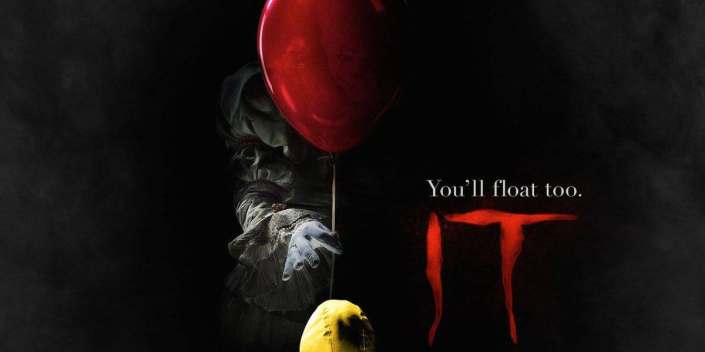 The Pitch: Fears Of A Clown.
The Pitch: Fears Of A Clown.
The Review: What is it about clowns? Thankfully I’ve never been a sufferer of coulrophobia, or a fear of clowns – I suffer from the much more rational mottephobia, the fear of moths, with their freakish, armless brown bodies and insanely quick, oversized flapping wings that bring you the tortuous death of a thousand butterfly kisses – but there are a few theories as to what causes people to be freaked out by them. (Clowns, that is, not moths.) The uncanny valley is one idea mentioned, that the faces of clowns are just far enough outside the realms of realism to disturb us. It’s also suggested that they push logic to breaking point, thus becoming associated with danger and fear, that their unpredictability or unusual physical characteristics give us the willies, or that the mask they wear hides their true emotions.
There could be a much more specific reason, particularly for people of my generation, given that coulrophobia seems to have first become a thing around the time of the mid-Eighties. It was, funnily enough, when professional clown / serial killer John Wayne Gacy had gained notoriety and when Stephen King dropped a thousand-page beast about a killer clown preying on the children of a town in Maine. So the latest adaptation of one of Stephen King’s most loved novels – and I use that term loosely, given its power to reduce grown adults to whimpering wrecks – has a lot to live up to in the scare stakes.
Andy Muschietti’s film adaptation certainly doesn’t hide its true emotions, wearing its pulsating heart on its ruffled sleeve right from the outset. It starts almost identically to the book that spawned it, with six-year-old George chasing a boat into a storm drain and coming face-to-terrifying-face with Pennywise The Dancing Clown. From there we move into scene setting and establishing, as we meet the seven children who make up The Losers Club, all destined to have run-ins with the local bully, to be tormented by manifestations of their worst fears and to come face to face with Pennywise.
Pennywise has a lot to live up to, with the previous embodiment (Tim Curry) having become something of a horror icon since his appearance in the 1990 TV miniseries. Bill Skarsgård is tasked with filling the oversized, floppy red shoes and does an admirable job, his appearance helped by a forehead the size of Devon and two red swishes of make-up that run past his eyes and draw your attention to it inexorably. Couple that with ruby red lips and buck teeth that make him look like the offspring of Jessica Rabbit and Bugs Bunny from the nose down, and it’s undoubtedly a disturbing appearance; thankfully Skarsgård has the mannerisms and delivery to back it up, too.
What helps him are the performances of the child actors, which are so grounded as to make Pennywise’s mere presence that much more skin-crawling. They are such perfect depictions of Eighties film children that you’d happily believe the film has been dredged up in film canisters from a storm drain where they’ve lain untouched for three decades. The film’s original writer and planned director, Cary Fukunaga, said he was aiming for a Goonies meets horror film vibe, and by stripping away the adult sections of King’s colossal opus the script achieves this brilliantly; you may be unprepared for quite how funny it is.
For it doesn’t just wear its heart on its sleeve, but on its bedroom walls, with posters for Gremlins, Beetlejuice and New Kids On The Block adorning the children’s rooms. They’re good reference points, for while IT succeeds in delivering a few effective jump scares and some nightmarish imagery, it’s the laughs which would be most likely to pull you back for a second viewing. As with Joe Dante and Tim Burton’s classics, it’s the laughs that bind you to the characters and make you care about their plight. (Even if, thanks to the setting pre-dating post-modern horrors such as Scream, the kids don’t have the common sense to avoided the dilapidated house that looks more haunted than the dreams of a dozen Ghostbusters.)
There are changes to the source material; the setting has been transplanted to the late Eighties, rather than the late Fifties, meaning the necessary sequel will bring us almost to the present day. But other changes have been necessitated by a lack of budget, and possibly a lack of confidence. Gary Dauberman, writer of the Annabelle movies, rewrote the Fukunaga script and by all accounts has steered it much closer to both the novel and conventionality. That will certainly give it a better shot at lasting mainstream success, but the lack of the novel’s more outré elements, for better and for worse, ground this adaptation in logic and predictability.
It’s a thrill ride that doesn’t skimp on the blood, reminiscent of bloody Eighties slashers such as A Nightmare On Elm Street in more ways than one, and it certainly ticks a number of horror movie boxes, but the real test will come when these kids grow up and humour can’t be the default fall-back position. For now, Muschietti has crafted an adventure, maybe lacking a true cutting edge or something radical or innovative but with just enough jump scares and buckets of humour, which does the first half of King’s work proud. At least there aren’t any moths in it.
Why see it at the cinema: Muschietti does conjure up some memorable imagery, and the laughs and the occasional scares will work better with a large audience.
What about the rating? Rated 15 for strong horror, violence, language. The Insight mentions that “scenes of horror include sustained threat from monsters, including a killer clown.” Well, duh.
My cinema experience: Watched it with a packed, younger, audience on opening night, and there were at least two satisfying occasions of half the audience leaping out of their skins, followed by the thirty seconds of nervous laughter as audience tries to recompose itself. It’s fairground ride scary, but it sure is effective.
The Score: 8/10
And one last thing…

Oscars Countdown: A Guide To What’s Actually Best Picture 2016
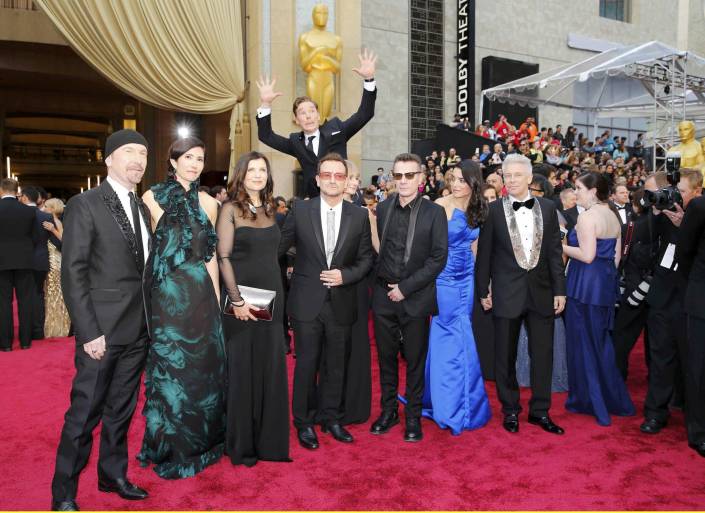
Yes, there is a teeny tiny chance that the Oscars may become a smidge political this evening. That’s a real shame, because it’s actually been a pretty good year for film again, and if we’re going to try to celebrate the best that Western cinema has to offer, then that should at least get a look in. I don’t begrudge actors, producers or key grips the chance to use the forty seconds before the orchestra kicks in at fortissimo to make the point about press freedoms are being eroded or civil rights are being wound back about thirty presidencies, because we should all have focus on the world around us and quite how quickly it could go down the crapper if we’re not careful. Films give us a window into the world that can be escapist and uplifting or reflecting and deeply meaningful, so we shouldn’t lose sight of the goal of celebrating quite how good cinema can be at its best.
Maybe people feel that films don’t have anything to teach us about politics? But films aren’t just a window into the world, they can be a window directly into the most powerful political minds in the world. Bill Clinton once said that the greatest perk of being in the White House was the movie theater, which has around 40 seats and four comfy armchairs with footstools at the front. Jimmy Carter watched 480 films there in his four year terms and rumours abound that Nixon invaded Cambodia after he watched Patton twice in a week and couldn’t stop talking about it.
You probably haven’t missed, if you’ve been watching the news, that President 45 (yeah, I’m a liberal too, suck it up) has already had his first White House screening, a movie nominated this year for Best animation. I’m not sure what message the administration will have taken from Finding Dory – maybe they didn’t read too much into it – but as I go through the list of this year’s films, in keeping with the slightly more political leanings of the times, I’ll also pass a brief thought on the suitability (or not) of each of the candidates for another White House screening.
I’m also limiting my selections to the nine films nominated for Best Picture, so that you don’t have to put up with my usual grumbles around the flaws with a voting system that, once again, selected out of an extremely diverse list of 336 eligible films a collection of live action, English language films predominantly produced in America and featuring mainly American talent. Given that, even with my prolific cinema attendance record, I’ve only managed to see 148 of these 336 films so far – with many still to be released in this country – there may be even more injustices than I can list here.
Among the films that should have been in the mix are in a better, fairer system that doesn’t rely on large numbers of the voters having seen the films are American Honey (probably too long and rambling for the Academy to watch in large numbers), Captain America: Civil War (too blockbustery), The Edge Of Seventeen (too commercial looking), Everybody Wants Some!! (too testosteroney), The Handmaiden (too obscure – it didn’t even get South Korea’s nomination for Best Foreign Language), Hunt For The Wilderpeople (too much of an action sequence at the end), I, Daniel Blake (too worthily British), Jackie (too stylised), Kubo And The Two Strings (too animated), The Lobster (too old, it came out in 2015 here), The Neon Demon (too shallow), Paterson (too poetic), Silence (too late in getting released and Scorsese’s already had his career reward), Sing Street (too lightweight), Toni Erdmann (too foreign, particularly galling given how much of the film is in English), The Witch (too niche horror) and Zootopia (too cute). All of these are better than the first four films on this list and at least three of them should have been genuine contenders for the big prize.
Here, then, are the films nominated for Best Picture at this year’s Academy Awards, given my definitive, binding and indisputable ranking of the nine films up for the biggest gong. (Warning: some of the Trump comments contain very mild spoilers.)
The Least Best Picture Is Hacksaw Ridge
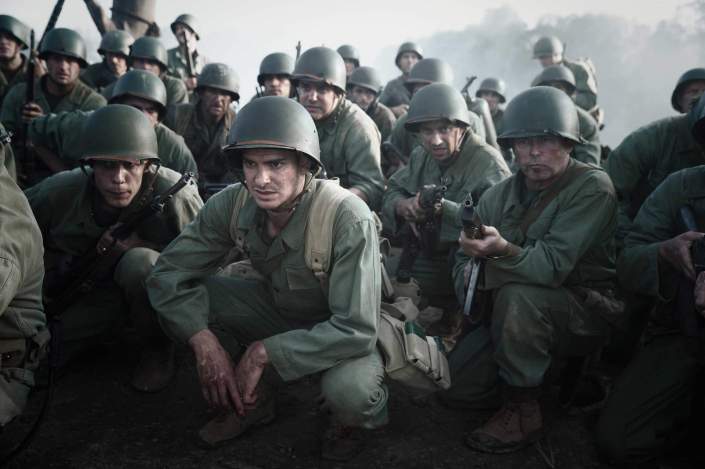
Is it really a good idea to make a film about a pacifist who went to war and then to make war look so incredibly cool? The film treads water for the first hour with Vince Vaughn and Sam Worthington playing pale imitations of the R Lee Ermey school of shouty military men, before Andrew Garfield finally makes his case for running into battle without a gun and the fun starts. For, while the film does a reasonable attempt at capturing the horrors of war, it also has men waving flamethrowers in slow motion and bullets ricocheting off helmets. It’s like a shinier, cheesier Saving 75 Private Ryans.
Why Trump should watch: It shows a shining example of a man putting his principle and his morals above violence and hatred.
Why Trump shouldn’t watch: It makes war look so cool that it’s a good job it didn’t feature a nuclear holocaust, otherwise we’d all be ****ed.
Which is not as good as Fences
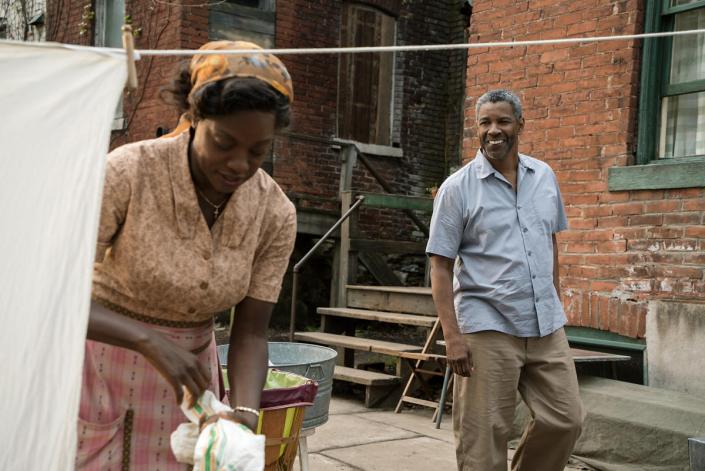
Viola Davis would be a worthy winner of Best Actress, so maybe the Academy still has some diversity issues if she has to drop down to Best Supporting to get recognition. It takes a little patience to get through the first half hour, which is mainly Denzel refusing to let anyone else get a word in edge-ways, before it settles into stellar acting set pieces and gasp-inducing plot twists. However, watching Denzel Washington’s attempts to make yet another scene set in the back yard look visually interesting (camera pans slowly to the left; camera pans slightly more quickly to the right) can be excruciating at times, and if there was a vote to give this film a new name, the clear winner would be Stagey McStageface.
Why Trump should watch: To get an idea that it’s real people with real lives who live in the inner cities and working classes.
Why Trump shouldn’t watch: It sees a man who’s committed a variety of crimes in his past and who isn’t that pleasant in the present eulogised and forgiven in the future. Don’t get any ideas, Donald.
Which is not as good as Hidden Figures
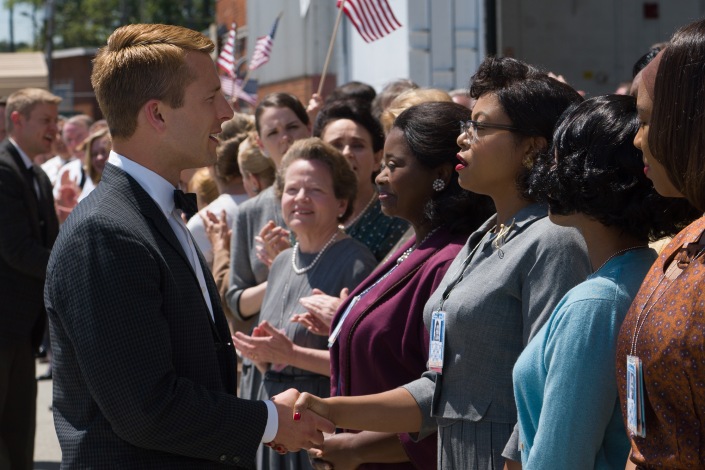
There’ll be much made of the fact that this film does wonders for showing both women and black people as strong role models and in a positive light, but there’s a maligned group that this white man is also thankful to Hidden Figures for successfully bringing to the screen: mathematicians. Yes, not only do black women get portrayed in a deserved spotlight for their role in getting John Glenn into space, but this makes people who scribble complex equations on a blackboard or who program insane looking, room sized computers look amazing, and as a mathematics and computer science graduate that’s my wildest dream come true. As powerful as the story is, though, it’s telling remains fairly conventional.
Why Trump should watch: As a reminder that NASA do lots of really important stuff. Hopefully the sequel will focus on their vital work on global warming.
Why Trump shouldn’t watch: The Russians come out on top at the start of the film when they win the space race. But it would be cool to be friends with Russia, right?
Which is not as good as Lion
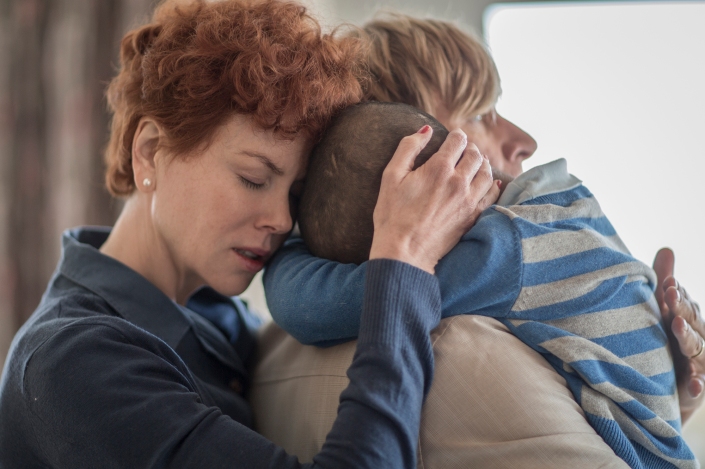
I am old enough that my first on-screen sight of Nicole Kidman was during a film night when on a school holiday at the age of eleven in BMX Bandits. Just a boat-based thriller with Billy Zane, a marriage to Tom Cruise, a dodgy Batman sequel, a Stanley Kubrick swansong, an Oscar-nominated musical, a duet with Robbie Williams, an Oscar, a BAFTA and a host more nominations later and seeing her up for her fourth Oscar nomination doesn’t feel like much of a surprise. Who’d have thought it? Looking forward to Sunny Pawar’s screen trajectory, which will presumably see him go the other way and after a tempestuous marriage to one of the Fanning sisters, he’ll end up in a cheesy Australian film about hoverboards. Anyway, Lion is a worthy, compelling true life tale that would have been a stronger contender had it not got slightly bogged down in the Dev Patel section.
Why Trump should watch: To see compassion, loyalty, humanity and stories of hope against the odds.
Why Trump shouldn’t watch: It may just reinforce the idea that all the information you need is on the internet. Don’t forget your intelligence briefings, Donnie…
Which is not as good as Hell Or High Water
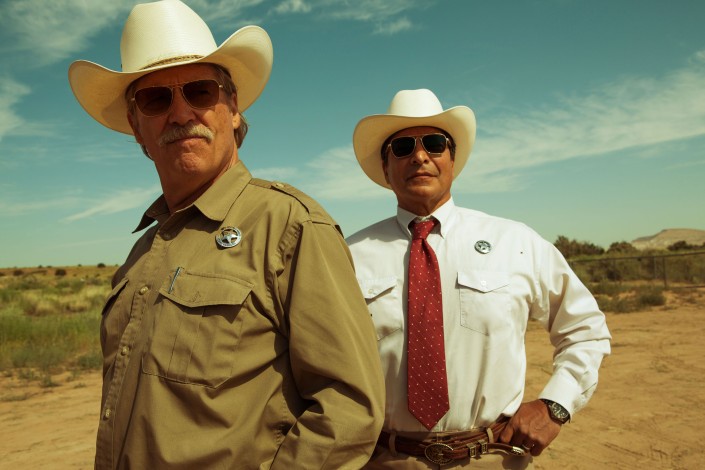
This got shamefully overlooked on its release at the start of the awards period, probably because it hit cinemas in August in the States and September here. But somehow it managed to channel the small amount of momentum it had from its debut in Un Certain Regard at Cannes into nominations at the Oscars. While Jeff Bridges puts in the kind of solid, charismatic work we’ve come to expect from him, his other three co-stars (Gil Birmingham, Chis Pine and Ben Foster) are equally good in their own ways. Taylor Sheridan’s script mixes crisp dialogue with poignant reflection and David McKenzie’s direction brings it to thrilling life.
Why Trump should watch: It shows the desperate lengths modern Americans are driven to in a society which continues to channel wealth further and further to the rich.
Why Trump shouldn’t watch: The Native American comes off worst. Let’s hope that isn’t an omen for the pipelines.
Which is not as good as Manchester By The Sea
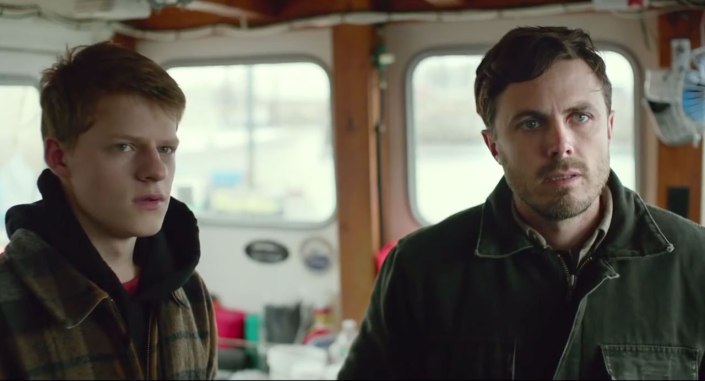
Have sexual harassment allegations against Casey Affleck scuppered not only his but the film’s chances? In a year when we seemingly can’t separate film from politics, maybe it’s no surprise that the slightest hint of impropriety, even deep in someone’s past, is enough to taint their candidacy as a leading actor. It would be a shame if it has, for while I can’t and won’t comment on Affleck’s private life, I do believe that he gives the best performance of any of the nominated actors this year. Michelle Williams also shows how it’s possible to command the screen with a bare minimum of screen time and we can but hope that this is just one of many beautifully nuanced character studies to come in the next few years from Kenneth Lonergan. Although I have to agree with Mark Kermode on one point: lose the Albioni Adagio next time.
Why Trump should watch: Misbehaving in the middle of the night can have devastating consqeuences which lead to bitterness and isolation, and these guys don’t even have Twitter.
Why Trump shouldn’t watch: Women just pop up occasionally in the background.
Which is not as good as La La Land

Did you hear about the woman who fell in the river in Paris? She was in-Seine! INSANE!! A-ha-ha-ha-ha-ha. Anyway, I’ve had the soundtrack of this in the car on a loop since I saw it, so I pretty much knew all the words by the time the backlash kicked in. There are suggestions that La La Land isn’t revolutionary and relies too much on nostalgia for its thrills, among a thousand other complaints, but that overlooks Damien Chazelle’s laser-scalpel focus on his central characters and his ability to discard supporting characters the moment they’re not required. Let’s be clear: I’m not convinced that either Seb or Mia are great people – Seb in particular is a textbook definition of an arse – but it’s a modern couple that have both chemistry and realistic dancing and singing skills in a musical that mixes great tunes with a wistfulness about the passage of time and the small margins by which choices define our lives and separate beautiful dreams from bitter reality.
Why Trump should watch: A reminder that the arts are critically important, even if it is classic films that a film buff hasn’t watched or white man jazz.
Why Trump shouldn’t watch: Man is obnoxious, rude, self-absorbed, mansplains simple concepts badly and still ends up getting everything he wanted.
Which is not as good as Moonlight
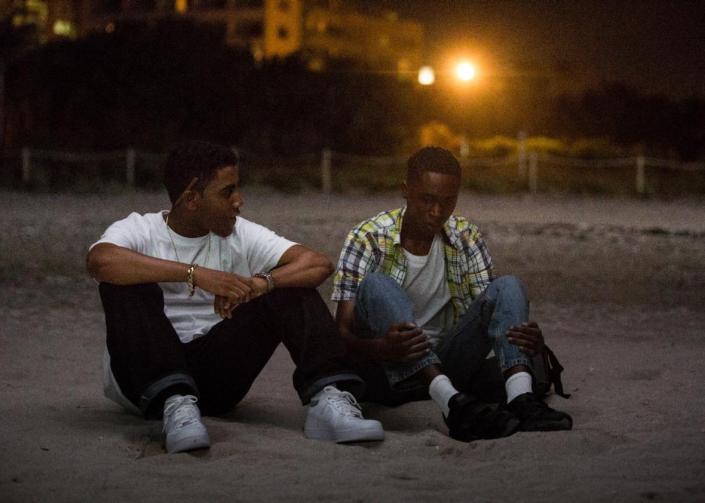
I would be thrilled if this wins the main award, because it’s supremely beautiful and as quietly devastating as anything I’ve seen on screen in years. It’s difficult to know how Oscar will go sometimes: if the glamour and romance of La La Land triumph we probably shouldn’t be surprised, but if actors want to reward their peers for some magnificent performances (Mahershala Ali, Naomie Harris and Ashton Sanders to name just three), gorgeous direction and cinematography and a script that delivers gut punches from the quietest of exchanges then they should have put their cross next to this one. There is a poetry in the scene construction and in the simpler moments that resonates long after the credits have rolled.
Why Trump should watch: Given the speed at which his presidency is rolling back the rights of minorities, a little understanding into how people explore their own nature and why it’s so important to value our differences could go a long way.
Why Trump shouldn’t watch: There’s a few black people here doing drugs and getting in trouble. It’s not *all* black people.
Which means that…
The Best Picture Of 2016 Is Arrival
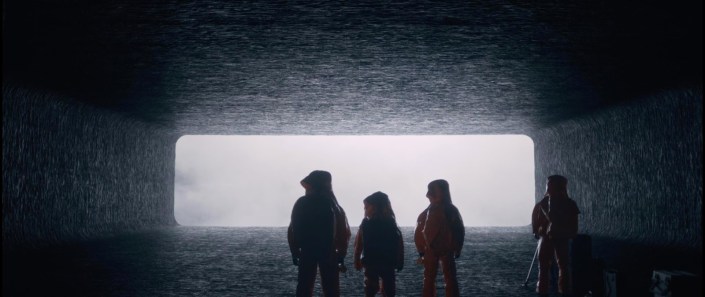
While Moonlight is the most deserving film of the year, the one that had the most profound effect on me personally is Arrival. A commanding performance from Amy Adams that was shamefully overlooked in awards season, themes of communication that are achingly prescient in these times, sci-fi concepts that might not be completely original but that are extremely well handled and direction from Denis Villeneuve that should make everyone with a pulse excited about Blade Runner 2049. Rapidly becoming one of my favourite film makers, Villeneuve delivered one of my favourite films of the past ten years and for me, by just a tiny shade, the best film of the year. (Good luck Moonlight, though.)
Why Trump should watch: Above all, the themes of this film are rooted in making simple decisions which can have ramifications through our entire lives, the power of communication and the importance of getting your facts straight.
Why Trump shouldn’t watch: America manages to isolate itself from every other country in the world and white American people attack illegal aliens but that doesn’t stop things turning out generally OK.
Your bonus content: my annual list of how the films rank out of ten, including those I saw this year that scored a 10/10 that didn’t make the grade. See you next year, if we’ve not had a nuclear holocaust by then.
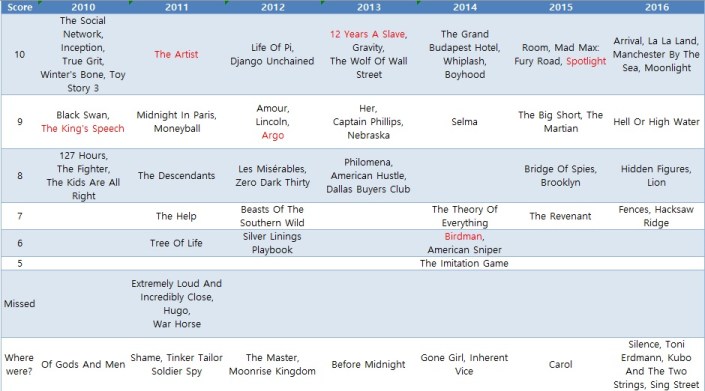
Review Of 2016: The 20 Worst Films I Saw In 2016
Next in my review of the year that was 2016 we come to the bottom of my own cinematic barrel, scraper in hand. A lot of people had the feeling that, in hindsight, 2016 was about as pleasant as being run over by a steamroller shortly after being mauled by a lion, but in film terms it was a pretty reasonable year. That doesn’t mean, though, that there weren’t a few absolute stinkers steaming up the place, and I had the privilege of seeing more of them than usual.
Normally I would pick ten films and call them the “least best”, rather than worst, but two things are different this year:
- Now that I’m doing more radio reviewing I’ve been trying to see anything which made the box office top 10. This inevitably leads to me watching more terrible films than when I make selections purely on what I want to watch.
- I’m calling them worst this year because they were all pretty terrible, I’m past the point of trying to be nice.
In some previous years, including last year, I haven’t even given a single 1/10 mark, my lowest possible mark. In 2016 I awarded two of them, as well as a record five 2/10s. We’re not even a week into 2017 and I’ve already seen a 2/10 film this year (well done, Assassin’s Creed, see you back here, same time, same place, next year).
So it seems only fair that, given I sat through proportionally more poor cinematic experiences this year, that I give you the benefit of my reviewing doubts and grumbles so that you can avoid these films in cinemas / on DVD / streaming / when they come on telly late at night in about six months.
So, these are the 20 films that provided me with the greatest desire to bash my head against the cinema armrest until I blacked out in the hopes of some blessed relief, from films I saw which had a cinema release between January 1st and December 31st, 2016. And some dishonourable mentions to some other 4/10 films which didn’t quite make the grade (in this case, a D+ grade rather than anything lower), which were: Robinson Crusoe, The Boss, Ben-Hur (2016), Keeping Up With The Joneses, My Big Fat Greek Wedding 2, Inferno, Alice Through The Looking Glass, Criminal, Warcraft: The Beginning and Allied. All had some redeeming feature or other which kept them out of this cesspool of movie drudgery and despair.
20. Passengers – 4/10

I make an odd feminist, given that I’ve been a man these past forty or so years, but I have to say that Passengers made me feel somewhat uncomfortable. While in real life, Jennifer Lawrence is likely to have taken home a pay cheque at least twice that of Chris Pratt, the film sets up a moral quandary which it pays the barest lip service to resolving and diminishes Lawrence’s character in the process. The script is on rails and is desperately predictable with precious little sense of actual drama, but it takes turns you don’t want it to and still plays out in obvious ways anyway. Jennifer Lawrence rightly felt violated by people looking at private pictures of her that were uploaded to the internet, but thanks to the treatment of her both as an actor and character, reduced to an objectified object of lust with weak principles, watching this film made me feel about as creepy.
19. Suicide Squad – 4/10

I actually had this film in my top trailer picks last year, under the title “Most Promising Trailer For Next Year If They Don’t Screw It Up.” The main issue seemed to be that, based on everyone loving the trailer when it was released and desperate to capture some good feedback after Batman Vs. Superman opened to scathing reviews, Warner Bros. decided to re-cut the entire film until it looked like one long trailer. It also managed to make most of its characters uninteresting, has logic gaps the size of the Grand Canyon, it fundamentally never explains why you’d assemble any of these people to take on any threat, never mind this one and it’s got a soundtrack that sounds like a bad compilation album from the Nineties. Jared Leto’s Joker was memorable, but for mainly the wrong reasons, and you have to feel sorry for Will Smith that he had to choose between this and Independence Day: Resurgence. Hobson’s choice might have been a better option.
18. London Has Fallen – 4/10
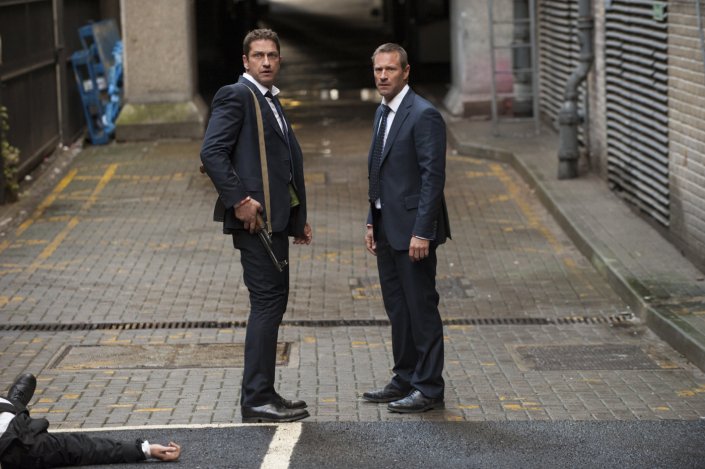
Sometimes you watch a film and you start to question how what you’re seeing unfold on screen ended up even being made. There were a few occasions when this happened to me during London has fallen: for example, during any of the thudduingly dull action sequences or when half of the Metropolitan Police and the Queen’s guards suddenly turn out to have been replaced by the bad guys. Gerard Butler had one funny line in the original, Olympus Has Fallen, and it seems this film felt that was a bar that shouldn’t be cleared under any circumstances.
17. Point Break – 4/10
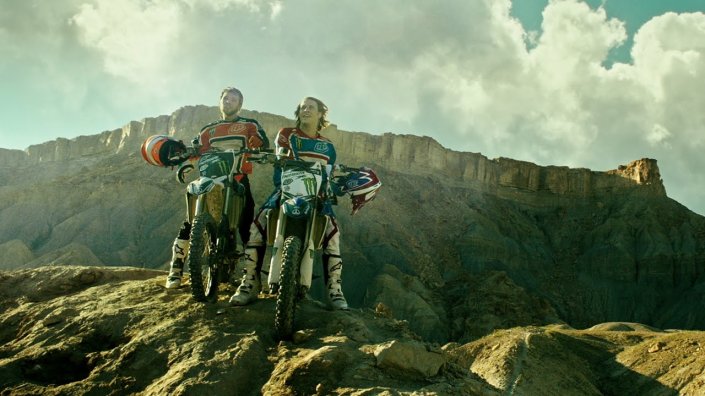
I don’t really have much to say about this utterly witless, pointless, charisma-less, excitement less, brainless remake of the Keanu Reeves / Patrick Swayze classic, other than that I had to go for a poo about 45 minutes in, and I wish I’d stayed longer, rather than hurrying back to the film, duty bound as I felt to see as much of the film as possible. Sorry if that’s too much detail, and I apologise if I’ve made you think about excrement, but hopefully it’s an association you’ll retain whenever this film comes to mind again.
16. Dad’s Army – 4/10
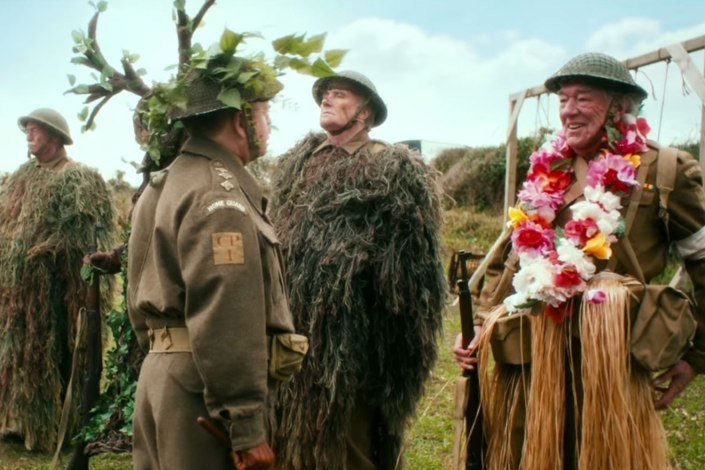
I’ll be honest, Dad’s Army is one of those old TV series that I appreciate, rather than enjoy, although I retain a soft spot for it as John Le Mesurier lived out his final years just around the corner from me. This film did its absolute best to wash away any such goodwill: it’s like a tribute band that are fantastic look- and soundalikes but terrible musicians. The casting is impeccable, but it’s as if the creative talent involved felt that was enough, with comedy in shorter supply than butter and cheese during rationing. There’s no rhythm or humour to any of the comedy and attempts to introduce some gender balance to proceedings just end up widening the amount of cast members left with little of value to do.
15. Mike And Dave Need Wedding Dates – 3/10
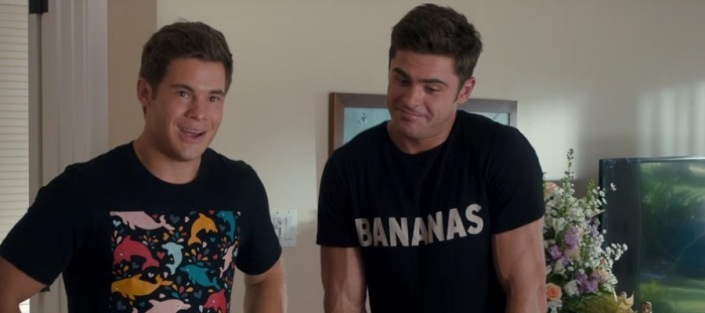
If there were awards for miscasting, then whoever thought Anna Kendrick would make an ideal person to play one of two girls with an absence of morals should get at least a nomination. This desperate comedy stumbles around in the hope of running into some jokes, but this could have been tied to a bull at the front door of a china shop and never have come close to a piece of dinnerware. And if you think my analogies are tortuous, then I’ve given you some sense of what sitting through this was like for me.
14. Friend Request – 3/10
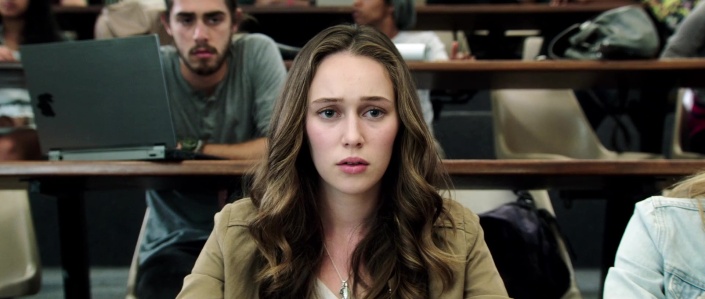
It’s haunted Facebook. At the point when they look at haunted source code, I stopped caring. The film I feel sorry for in this is 2014’s Unfriended, which was at least twice as enjoyable, but has been confused with this film to the extent that the Wikipedia page has a disambiguation at the top.
13. Allegiant – 3/10
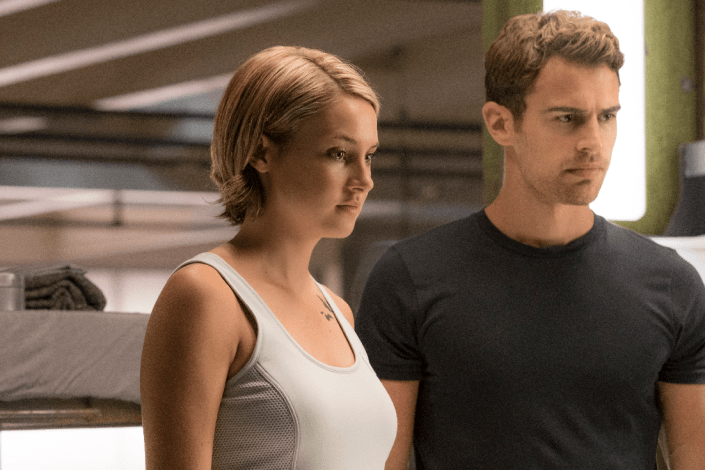
When a studio starts a young adult franchise in the wake of The Hunger Games that’s due to run for four films, but after the third film decides it won’t even bother to release the last one in cinemas, there’s nothing we really need to say, is there? My only regret is watching the first two on Amazon Prime before seeing this at the cinema, and watching the train wreck unfold in what felt like real time.
12. The Forest – 3/10
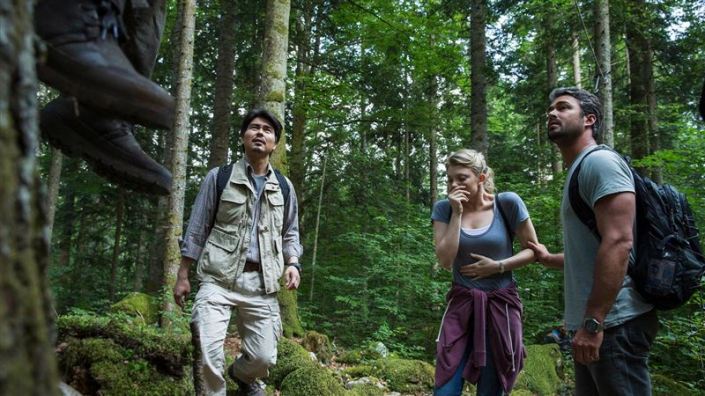
It’s difficult to know exactly what The Forest it trying to be, although it should be to the regret of cast, crew and audience that one of those things isn’t “at least vaguely scary”. If you’re going to set a film in a real-life Japanese suicide forest (and annoy quite a few people into the bargain), you should be aiming for at least some level of creepiness. If you’re going to cast the wonderful Natalie Dormer to play two roles in your film, at least give her something good to do with one of them.
11. The Angry Birds Movie – 3/10
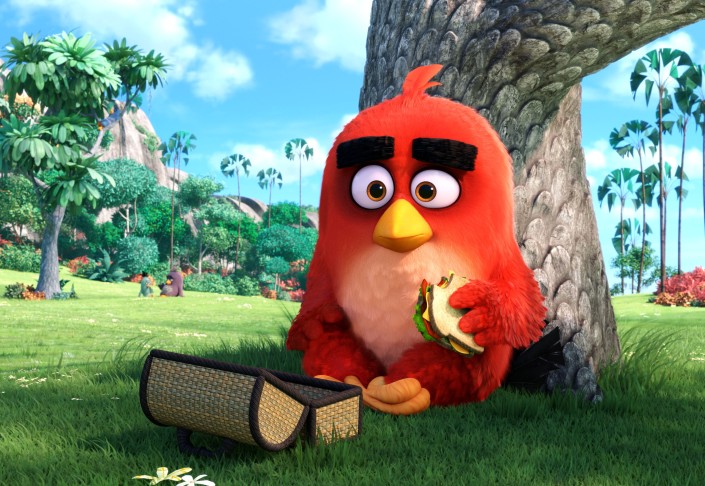
I try to go into every film I see with an open mind, so when I went to see the Angry Birds movie, I was prepared to give it a chance, especially when the credited writer (Jon Vitti) wrote some of my favourite episodes of the Simpsons, as well as shows from King Of The Hill to The Larry Sanders Show. I’ve played the game occasionally on my phone, and if you have you’ll know it’s a simple, disposable idea: birds try and demolish structures with pigs on them. Somehow this has been stretched out to over an hour and a half, following that simple structure so slavishly that any attempts at humour – and they are few and far between – are suffocated by disinterested voice acting and the film’s clumsy structure. Actually less fun than watching someone else play Angry Birds while sat opposite you on a train.
10. Blair Witch – 3/10
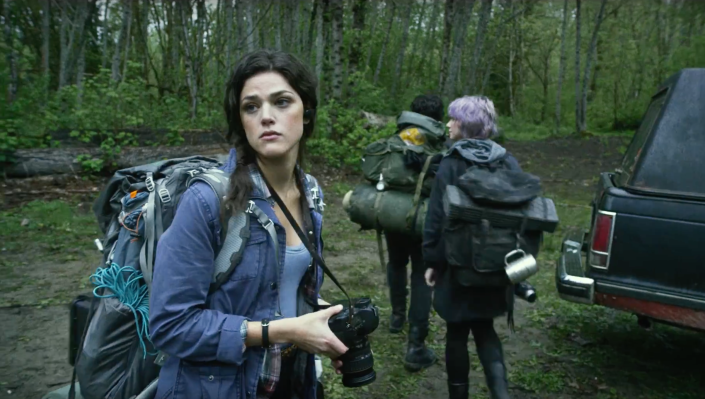
If ever a horror movie unleashed an actual monster, then it’s the flood of poor imitation found footage movies that have been unleashed over the decade and a half since The Blair Witch Project first popularised the genre. This wasn’t even announced as a Blair Witch movie at first, and it had a great pedigree (Adam Wingard and Simon Barrett, who gave us You’re Next and The Guest), but it seems to fatally misunderstand what made the original so effective. It’s a photocopy of an iconic horror, with added annoying characters but with the actual horror sucked out aside from one preposterous twist, and the end of the film’s attempt to differentiate from the crackly VHS of the original becomes nigh-on unwatchable.
9. Absolutely Fabulous: The Movie – 3/10
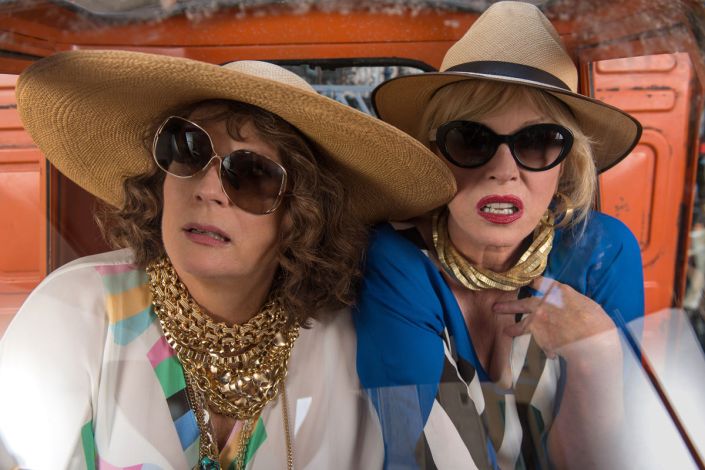
I was not a fan of the original series, having sat stony faced through episodes while both my sister and the ex-Mrs Evangelist watched it during its various runs on the BBC. So chances are it was never going to set my wheels on fire. But, more fool me, I actually paid to go and watch this in more comfy seats rather than a standard cinema in an attempt to cushion the blow. Simply having has-been and would-be celebrities pop up in gratuitous cameos and pushing Kate Moss off a wall were never likely to be enough, but the attempts at plot – including Patsy’s bizarre gender-swapping, cash-grabbing marriage – are thin as a supermodel and three times as bizarre.
8. Batman vs. Superman: Dawn Of Justice – 3/10
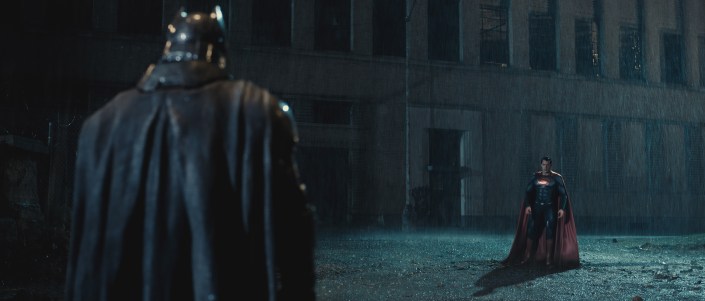
Dear Hollywood, you’ve been making superhero movies in large quantities for most of this century. There have been some great successes, some iconic new characters, but there were only three that mattered to me as a child, and there are still only three that I truly care about their representation on film. It looks like Marvel are getting Spider-Man right now, so I’ll be keeping my fingers crossed so tightly it cuts the blood supply off that when Justice League arrives in November, it manages to sort out the other two.
It gives me no pleasure at all to see Batman Vs Superman sink this low, but the film is a mess in ways almost too numerous to list. But I feel the need to try, in the critical hope that the DC Extended Universe can stop making these films so wretched.
- The plot is a complete nonsense, a paradox of muddied complexity and childish simplicity that feels like cut-outs from a dozen fan-fictions stapled together
- The characters are totally wrong: Batman is arrogant and stupid, while Superman is self-absorbed and careless. If you’re going to keep repeating their cinematic portrayals, you need to vary them up, but not to the point where they’re both unrecognisable as those characters and also verging on repellent to watch
- Decent, compelling villains are required, as the pitching together of Earth’s mightiest heroes never convinces and Jesse Eisenberg’s performance is horrible
- I wasn’t as won over as some by Ben Affleck’s performance as Batman, but I think he’s got more chance of being interesting in future films than Henry Cavill.
- The action sequences are uniformly dull and unmemorable, and coming so soon after The Dark Knight trilogy this is unforgivable
- The ending tries to generate emotional stakes that the film hasn’t earned, from the appalling Martha nonsense to the fates of the lead characters
- There are any number of random dream sequences which seem to be an attempt at foreshadowing, but when only lifelong comic book readers will take anything from them the general audience is likely to feel totally lost
- The universe building is shambolic, having your main character sit down at the end of the second act of your film to effectively watch trailers for upcoming films in the franchise while the plot stops dead for ten minutes is an insult and cameos from characters we haven’t met yet becoming a deus ex machina is appallingly lazy
- It’s unbelievably po-faced and serious – The Dark Knight proved you can weave humour through darkness and grit, but this film is almost oppressively self-important and deadeningly humourless
- The dialogue. For the love of Kryptonite, the dialogue. Examples:
- “He has the power to wipe out the entire human race, and if we believe there’s even a one percent chance that he is our enemy we have to take it as an absolute certainty… and we have to destroy him.” Er, no.
- “That is a three syllable word for any thought too big for little minds.”
- “Master Wayne, since age 7 you have been to deception as Mozart to the harpsichord. But you’ve never been too hot at deceiving me.”
Frankly, this film would be at the bottom of the list, but they managed to make Wonder Woman more cool than Bats and Supes put together for ten minutes. Next time it has to be better for longer. A lot longer.
7. Gods Of Egypt – 2/10
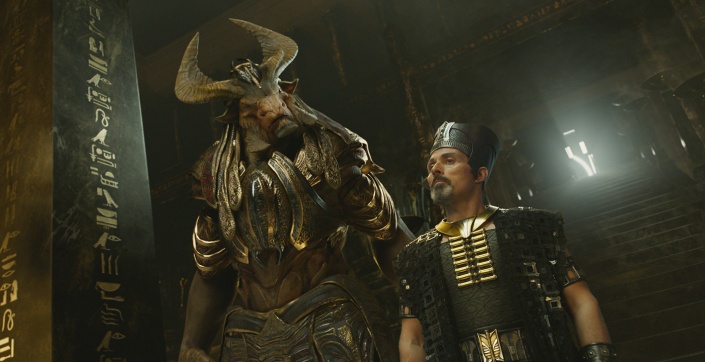
I’ll be honest, if you gave me a free cinema ticket in return for watching one of the films on this list again, it would almost certainly be this one. It’s mostly bonkers, rarely boring and looks spectacular in places. But in other places it looks unfinished, CGI not even looking close to properly rendered, it perpetuates unnecessary white casting in films, it tries to take itself seriously at all the wrong times and the script is a craggy mess. To try to pretend that it’s so bad it’s good would be a falsehood; it’s so bad that it’s train-wreck watchable, but it’s not good / bad enough to be future cult viewing.
6. Office Christmas Party – 2/10
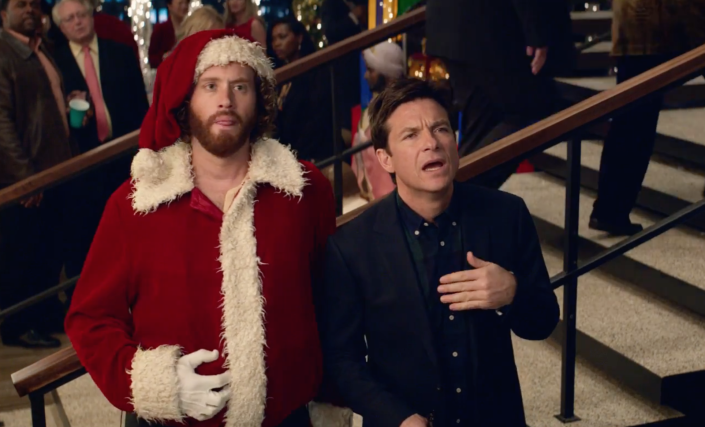
You know what’s worse than a dreadful office Christmas party? Watching other people have to endure a dreadful office Christmas party. I love Christmas, but this almost made me renounce my religion and give up presents it’s so deeply, deeply unfunny. There are only so many more American “comedies” that I can sit through while not a single person in the audience can generate the energy to even chuckle. Kate McKinnon’s performance in Ghostbusters went a large part of the way to saving that film, but even she can’t rescue this one from the mire of mistletoed mediocrity.
5. Hardcore Henry – 2/10
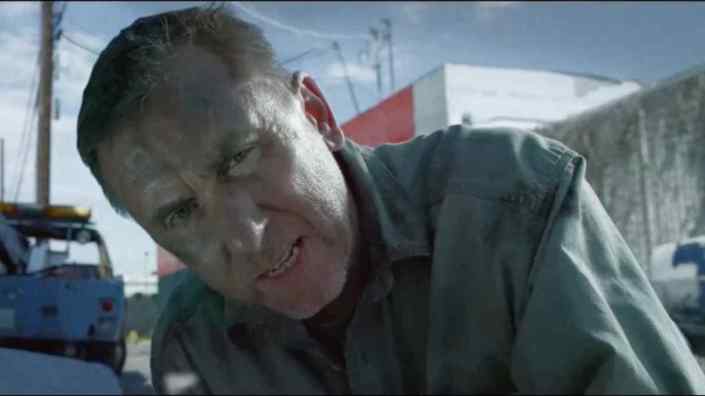
Hardcore Henry wants to put you in the perspective of someone playing a video game. But it’s shot and acted in the most rushed, disinterested way possible, and the experience of watching it is as if someone has put a VR headset on you, then repeatedly kicked you down a flight of stairs. The movie’s general idea and concepts are fun, such as giving Sharlto Copley multiple roles, but the whole film – shot on GoPro cameras and then edited together in such a way as to automatically induce vomiting if you look at the screen for more than five seconds – is almost entirely unwatchable. The absence of interesting characters, dialogue or plot then take it the rest of the way.
4. David Brent: Life On The Road – 2/10

The third BBC sitcom in this list turned film, and the third one which I couldn’t stand. The film, that is, not the original series, which was a piece of genius. What made this the polar opposite of the series that spawned it? Was it the absence of Stephen Merchant from the writing which saw all of the offensiveness without any of the humour or pathos? Was it that most of the new characters are as interesting as reading a stationery catalogue (with the one exception of Tom Bennett’s brilliantly sympathetic Nigel)?
Was it, maybe, that the film’s third act redemption of sorts is unearned and the 180 degree turn of the other characters is unbelievable? Was it that the songs Brent writes aren’t inadvertently brilliant or laughably terrible, just predictably mediocre? Or was it that being an idiot with no self-awareness is something that is taken too far in this portrayal of David Brent? Many of the attitudes towards lesser characters – such as a mentally ill woman who presents Brent with a dead insect – are failings of the film, not Brent, and it’s too often just offensive without the smarts to make that funny.
3. Mother’s Day – 2/10

Let’s remember Garry Marshall, who directed Mother’s Day, and who sadly died last year aged 81. Let’s remember him for Happy Days and Mork & Mindy, which he created. Let’s remember him for Pretty Woman, for Beaches and for The Princess Diaries. Let’s try to to forget that this slightly racist, bullishly unfunny travesty ever happened. Let’s try not to dwell on how it costs $25 million these days to put together a film which is too inert and mawkish to be a drama and too mugging and obvious to be a comedy. Garry Marshall, rest in peace and thank you for the memories. Just not this one.
2. Nine Lives – 1/10
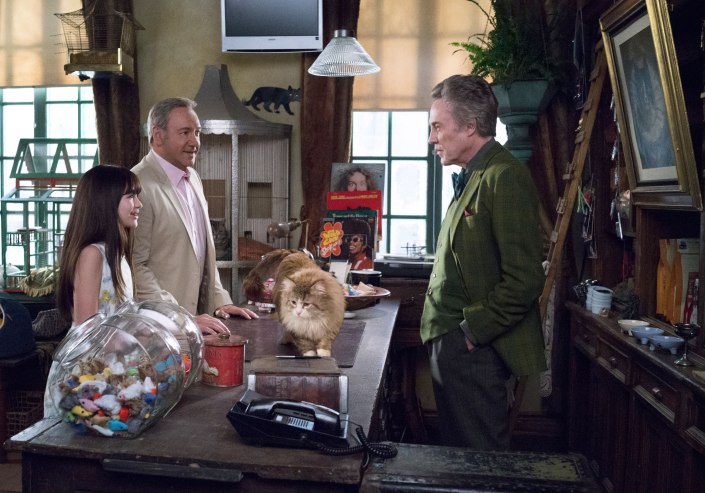
A film so terrible that it cheapens the memory of every other film you’ve seen starring the people in this one, from The Deer Hunter to American Beauty (and, frankly, even 13 Going On 30). A children’s film disturbingly obsessed with death and suicide, which plays out for large stretches as a faked YouTube cat video and which makes the laziest choice every time it has to make one. It tries to hand out life lessons, but the only lesson it’s taught me is “don’t watch any more Barry Sonnenfeld movies.” My cat will often sit on my bedside table and claw at my face to wake me up, and I’d rather sit through an hour and a half of that than ever watch this again.
1. Dirty Grandpa – 1/10
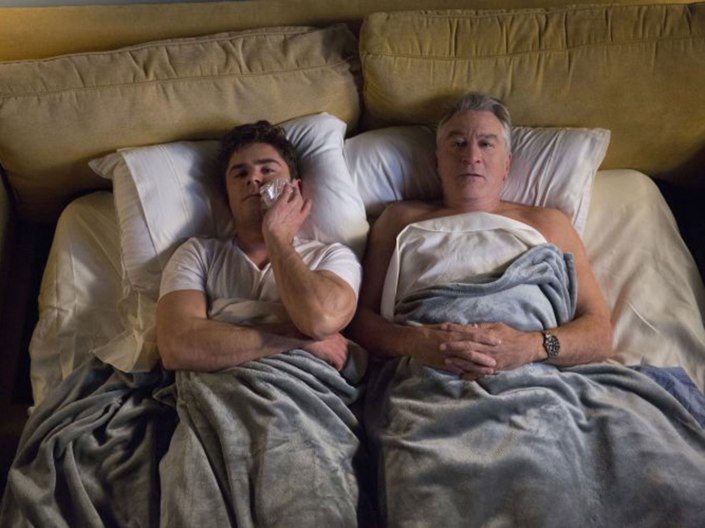
I’m still not sure I’d go as far as describing myself as a film critic, but I watch a broad enough variety of films to say that, if I’m expecting you to listen to my opinion, then there has to be a chance I’ll enjoy any genre of film that you put in front of me. So it’s not that I dislike crude, lewd humour: Jackass 3 made my top 40 of the year in 2011. Nor is it that I can’t find offensive films funny: Dan Mazer, the director of this one, has writing credits on some of Sasha Baron Cohen’s best work, including Borat and Bruno. I like humour to provoke me and push boundaries, and you’ll notice that one particular comedy from 2016, Grimsby, isn’t in this bottom 20 because as dreadful as it was in parts, its elephant sex scene actually had me in fits of appalled laughter.
It’s also not that Robert De Niro is a bad comedic actor, almost the opposite. From Midnight Run to Meet The Parents, The Intern to Analyse This and The King Of Comedy to Wag The Dog, De Niro is as versatile an actor as he is a dramatic heavyweight in more serious roles. It’s also not that he doesn’t commit to this role: it’s clear that he’s giving his all to this performance, when he has just occasionally sleepwalked through film roles. And it’s not that there’s any problems with the supporting cast: Zoey Deutch was a delight that balanced out the atmosphere of testosterone in this year’s Everybody Wants Some!!, Zak Efron has shown he can be great in the right roles in films from Hairspray to Liberal Arts and Aubrey Plaza is brilliant in the likes of Life After Beth and Safety Not Guaranteed.
And I’m not even sure it’s the script, which on the 2011 Black List, the annual list of the most highly regarded unproduced scripts in Hollywood. (Although, saying that, maybe the 2011 list wasn’t a vintage one, as despite having Django Unchained it also contained The Accountant, Grace Of Monaco, Jane Got A Gun and this. Compare that to 2010, which had Argo, Looper and Stoker, or 2012, which contained Arrival, Hell Or High Water, John Wick and Whiplash.)
So what is it that makes Dirty Grandpa such a toxic hellhole of anti-comedy? How can it be that we’ve ended up with 102 minutes of mirth-free, soul destroying unreconstructed racism, sexism and homophobia attempting to pass itself off as funny? Why do I get the feeling that watching my cat cough up hairballs onto a fat, sweaty bald man cutting his toenails while episodes of “It Ain’t Half Hot, Mum” play on a loop in the background would be preferable to, and less offensive than, sitting through this garbage? Is it possible that you can put too many great ingredients together and inadvertently create something awful?
No. Simply put, it’s got only one trick to try to be funny, and that’s to be as crass as possible, but when that fails time after time it’s just profoundly, resoundingly unfunny to almost unprecedented levels. Eventually the repetition of tedious, blundering doltishness – and sometimes, repeating the exact same jokes – reaches such levels that the sheer act of continuing to try to be funny becomes offensive in and of itself. Most of the characters are zero-dimensional, soulless shells that it’s impossible to root for, yet the film sets them on a course so predictable that your average invertebrate who’s lived on a remote island its entire life could probably see what’s coming.
So thank you, Dirty Grandpa, for at least ensuring that a film with Kevin Spacey and Christopher Walken in it wasn’t the worst thing I saw in 2016. It’s just a shame something with Robert De Niro and Aubrey Plaza in it had to be.
Previous years:
The 10 Least Best Films I Saw In 2015 “WINNER” – Pixels
The 10 Least Best Films I Saw In 2014 “WINNER” – Nymph
The 10 Worst Films I Saw In 2013 “WINNER” – A Good Day To Die Hard
The 10 Worst Films I Saw In 2012 “WINNER” – Seven Psychopaths
The 10 Worst Films I Saw In 2011 “WINNER” – Battle: Los Angeles
Review Of 2016: The Half-Dozen Most Viewed Trailers Of 2016

Ah, the olden days. I remember when all this was fields, it wasn’t like this when I was a lad, you could get a racehorse and a speedboat for two shillings and sixpence, men were men, boys were small men and women were men with different dangly bits. But most importantly, in the olden days I used to write a film blog.
That, of course, was in the days before I became the regular reviewer on BBC Radio Cambridgeshire’s drive time show with the esteemed Chris Mann, started writing a column in the Cambridge News and found 1,000,001 other distractions, most of them watching films. In fact, I ended up watching films so much that I didn’t really have time to watch trailers, at least in the cinema.
I also feel that the trailer is becoming a lost art form. The gravelly voice man is now just the province of Honest Trailers, and trailers are now just a window for all of the best bits of the film, desperately trying to recruit you to the cinema where you’ll see them again with lots of boring, superficial context dragging them out to two hours or more.
The rise of internet advertising and the use of the Skip button has also seen another change to trailers when viewed online: the trailer trailer. Not to be confused with the teaser trailer, which is a shorter trailer released before the main trailer, or the trailer preview, where they release part of the trailer a few days before unveiling all of it in an attempt to induce a Pavlovian response from fanboys and girls worldwide, but where you get a trailer in five seconds with lots of rapid cuts in the even that your trailer is being used as an advert; this way, you get to see a trailer even if you click “Skip in…” when it counts down to zero. If you don’t, you get two trailers for the price of one. If you watch a trailer with a trailer trailer attached before watching the film it’s trailing, you can make yourself feel like you’re being sucked into a black hole where time is gradually dilating to the point of infinity. Or you can watch five minutes of a Transformers movie to achieve the same effect. But I digress. (Ah, how I’ve missed digressing in my blog again. But I digress from my digress. A digress digress, if you will. ANYway…)
Traditionally I would at this point pick out my six, or twelve favourite trailers of the year, but they’re all so much of a muchness I’ve struggled to find that many I’d even care about. I will pick out a favourite of the year before this is over, but as I’ve not blogged all year – apart from spewing out two brief flirtations at Oscar time – I think it would be useful to review what you’re actually getting from the big trailers these days.
Let’s take the six biggest trailers of 2016, coincidentally six of the seven biggest trailers ever, and see what we can learn from them about their films, and about the increasingly lost art of the trailer.
6. Guardians Of The Galaxy Vol. 2 (released December 3, 81 million views in 24 hours)
So this trailer is all about reassurance. You liked the first one, because it was very slightly different from all of those other Marvel movies, in that it was funnier and set off Earth and had a tree with a five word vocabulary and a weird throwback soundtrack. So the trailer is designed to reassure you that you’ll be getting all of this again this time round, by showing you a funny scene and some spaceships and the tree being cute and awesome and with a slightly different throwback soundtrack. It doesn’t actually show you any plot, but maybe that’s a good thing?
5. Transformers: The Last Knight (released December 5, 93.6 million views in 24 hours)
*types name of film into YouTube to find official trailer*
*wades through pages and pages of people reposting the trailer, trailer reactions and trailer breakdowns*
*notices that one of the trailer reaction videos has over half a million hits*
*wonders if I’m wasting my life*
*watches trailer*
*wonders why I even bothered asking that previous question when the answer is self-evident*
4. Captain America: Civil War (released March 10, 94.7 million views in 24 hours)
It’s another entry in the Marvel Cinematic Universe, the thirteenth in fact, and the third with Captain America in the title. So this has to fight against the law of diminishing returns and convince you that you have to be sat in the cinema. But, rather than a plot driven trailer, this is all about the stakes. Stakes that bring back Bucky (who we’ve seen before), that show off six Avengers either sitting at tables looking serious or doing cool action sequences (who we’ve seen before), that show a new character that looks like some form of Panther in a black costume (that we don’t know about yet so it’s harder to care), that shows Captain America and Iron Man fighting (we’ve seen Avengers fighting lots of times before), that puts in a cool dialogue reference to the first Captain America movie (seen that before – check) and has an inordinate amount of things blowing up. I’m not even going to say it.
But wait – who’s that wall-crawling web-slinger? We haven’t seen him before, have we? Sigh.
3. Fifty Shades Darker (released September 13, 114 million views in 24 hours)
Fifty things I learned from the Fifty Shades Darker trailer:
- There are, apparently, more than fifty shades of grey. Forget your Turtledove Grey or Light French Grey, we’re in Monument Grey and Forest Grey territory here, people.
- Jamie Dornan’s back. So despite lots of stories about “disillusionment” and “creative friction”, looks like something called a “paycheck” won out.
- So’s Dakota Johnson. Yes, this is the same as point two, I’m trying to make fifty points here, cut me some slack.
- This is the official trailer, as opposed to the unofficial trailer. (Well, that trailer doesn’t make me want to watch the film any less, anyway.)
- It’s made by Universal, who made $570 million dollars from a $40 million budget on the first one. Bet there were a lot of executives agonising about whether to greenlight this sequel…
- It’s coming on Valentine’s Day. Because what could be better than a little bondage and misogyny for the most romantic holiday of them all?
- We have to “forget the past”, i.e. “the first one was terrible but this will be better.”
- It’s personally disappointing when someone doesn’t follow slipping on a black mask by saying “I’m Batman.”
- There’s no way Ana could be Batman, though. Her mask is see-through. What use is that for a crime-fighting superhero?
- Well, the characters are back together, so presumably something’s happened since the last film. Or will happen in this one. Guessing is fun.
- The way to really tell someone you throw extravagant parties is with someone who breathes fire. Nothing less will do.
- Apparently there is no limit to the number of slowed-down cover versions of “Crazy Right Now” you can cut a trailer to.
- This trailer is not in order. Or some of it’s from a previous film. Look, I’ve tried really hard to forget it, OK?
- If you’re really rich, you can install a shower big enough to host a whole rugby team, just in case you want the dramatic effect of taking your lover against the wall to have more theatre.
- There’s fireworks. That’s probably symbolic.
- Jamie Dornan can do more chin-ups than me, and by that I mean Jamie Dornan can do a chin-up.
- After being stalked repeatedly by Christian, Ana is only mildly surprised when a stranger turns up in her flat unannounced while she’s sleeping, rather than freaking out and throwing things and calling the police.
- Oh wait, it was her imagination, which is surely even more disturbing.
- There’s another man on the scene, and he seems as much of a depressing manwaste as Christian.
- Kim Basinger, if you walk into a room and then hold up your mask, it’s missing the point, we know who you are already.
- Either there’s not much footage in this trailer, or Ana is practically living in that silver dress.
- There’s a helicopter out of control, which is probably a metaphor as well.
- There’s that imaginary woman again. Is this actually a horror movie? (Might be more interesting if it is.)
- This version of Crazy In Love is performed by Miguel. That’s lovely. (I barely know who Beyoncé is, never mind Miguel. Getting old.)
- It’s coming out on Valentine’s Day 2017, in case you were wondering which year it would be released based on the ambiguous card earlier that said Valentine’s Day but not the year.
- James Foley is on directorial duties. He did Glengarry Glen Ross, and nothing else much good. This will go one of two ways.
- Which means that Sam Taylor-Johnson has had a lucky escape this time.
- Danny Elfman is once again composing. How I would love it if his score was closer to a Tim Burton score. Or just The Simpsons theme on a loop.
- The screenplay is by Niall Leonard, who’s also written for Spender, Ballykissangel, Monarch Of The Glen and Wild At Heart. (All of which would have been livened up by some light spanking and dubious sex contracts.)
- This also means that E.L. James didn’t get to write the screenplay, so we may be denied some of her usual zingers.
- Somewhat unsurprisingly, I didn’t manage to find 50 things to mock in a two minute trailer, so I will complete the list with some of those actual E.L. James zingers from the book. Here’s hoping they make it into the film.
- “His eyebrows widen in surprise.”
- “I wasn’t aware we were fighting. I thought we were communicating…”
- “Just smell that new car smell. This is even better than the Submissive Special … um, the A3.”
- “Ah, Mr. Grey, your perpetually twitching palm. What are we going to do with that?”
- “He’s like several different people in one body. Isn’t that a symptom of schizophrenia?” (No, it isn’t.)
- “Not today. I was late getting in, and my boss is like an angry bear with a sore head and poison ivy up his ass.”
- “Sooners rather than laters, baby.”
- “My mother had a mantra: musical instrument, foreign language, martial art.”
- “I’m talking about the heavy shit, Anastasia. You should see what I can do with a cane or a cat.”
- “He smirks and cranks his glorious smile up another notch so it’s in full HD IMAX.”
- “Yes, I’ll get wrong sometimes – I’ll make mistakes, but I have to learn.”
- “What! Sex in the car? Can’t we just do it on the cool marble of the lobby floor…please?”
- “What a time to have a brain-to-mouth filter malfunction.”
- “My subconscious has her arms crossed and is wearing Burberry check . . . jeez.”
- “You are going to unman me, Ana … You — take me. Ana, touch me … please.”
- After a while, he sighs, and in a soft voice he says, “I had a horrific childhood. One of the crack whore’s pimps . . .” His voice trails off, and his body tenses as he recalls some unimaginable horror. “I can remember that,” he whispers, shuddering.
- My inner goddess is doing a triple axel dismount off the uneven bars, and abruptly my mouth is dry.
- I take a deep breath and head back out into the club. I mean, it’s not as if I haven’t gone panty less before.
- Oh! Hesitantly I pull the drawer open, not taking my eyes off his beautiful but rather smug face. Inside there are an assortment of metal items and some clothespins. Clothespins! I pick up a large metal clip-like device. “Genital clamp,” Christian says.
2. Beauty And The Beast (released November 14, 127.6 million views in 24 hours)
So you know that live action Disney film based on Cinderella that made a lot of money that wasn’t all that much like the animated Cinderella? And that live action The Jungle Book film based on The Jungle book that was a lot more like the animated The Jungle Book that made a lot more money? Well here comes a live action Disney film based on Beauty And The Beast which is a tragedy starring Danny De Vito as Beauty and Jennifer Lawrence as the voice of The Beast, who will be portrayed by a sock puppet. Only kidding, its EXACTLY THE SAME as the animated Beauty And The Beast but with added Emma Watson, so it’s probably a bit more modern and feminist. Ker-CHING!
1. The Fate Of The Furious (released December 11, 139 million views in 24 hours)
I would have watched this trailer more closely, but after their amazing F-eight pun I was trying to thing up puns for the inevitable next film. Maybe one with dogs? (The Canine And The Furious, obvs.) One based on proverbs? (A Furious Stitch In Time Saves Nine?) One where the cars give up driving on roads completely and dispense with the laws of physics all together? (On Cloud Nine With The Furious?) Or maybe just The AssiNine And The Furious? Anyway, this has a chase on ice, so apparently we’ve learned nothing from Die Another Day. If this has bad CGI surfers, invisible cars and any kind of reference to Madonna then I’m officially bailing.
Well, that’s it, the best trailers of 2016, as judged by the number of times people with low standards have watched them forty times in the first hour and a half of their upload. Which only leaves me to pick out my favourite trailer of the year.
The Best Trailer Of 2016 – Dunkirk
Simplicity is the key here. Just enough to give you a flavour, and then the construction of the shot where the soldiers react closer to the camera, then further away, felt a world away from the trailers for the generic blockbusters I’ve just been dissecting. After the disappointment of Interstellar, this got me excited for Christopher Nolan’s next immediately, and for its instant power and effect, this gets my vote for the best trailer of 2016.
Previous years:
The 12 Best Trailers Of 2015 WINNER – Star Wars: The Force Awakens
The 12 Best Trailers Of 2014 WINNER – The Babadook
The 12 Best Trailers Of 2013 WINNER – Gravity
The 12 Best Trailers Of 2012 WINNER – The Imposter
The Dozen Best Trailers Of 2011 WINNER – Submarine
The Half Dozen Best Trailers Of 2010 WINNER – The Social Network
Oscars Countdown: A Guide To What’s Actually The Best Picture 2015
Each year, I do two things: I attempt to watch as many of the Oscar nominated films as possible, to be as informed as I can in my disgruntlement that the best films and performances haven’t won, and then – having usually seen all of the Best Picture nominations – I rank them all into order of greatness, because several thousand people who work in the film industry clearly don’t know as much as a humble film blogger living in Britain with no formal film studies qualification, writing training or experience in film of any kind.
Ahem.
Well, despite not having time this year to write words – yet, I may come back to this and add them after the awards, especially if my eighth choice ends up winning the award, as is a distinct possibility – I still wanted to at least publish the ranking, so that you, dear reader, and Hollywood and the rest of filmdom could disagree and scoff accordingly. So almost without further ado, here are the eight Best Picture nominations, ranked from worst to best.
(For the record, the first film on the list here is a 7/10 for me, then two 8s, two 9s and three 10/10 films to round out the list. This means I’ve awarded exactly three of the Best Picture nominations the highest possible mark for the third successive year, after The Grand Budapest Hotel, Boyhood and Whiplash got top marks last year and 12 Years A Slave, Gravity and The Wolf Of Wall Street did it for me two years ago. Right, that’s the ado out of the way, here’s the ranking.)
The Least Best Picture Is The Revenant

Which Is Not As Good As Bridge Of Spies

Which Is Not As Good As Brooklyn

Which Is Not As Good As The Martian

Which Is Not As Good As The Big Short

Which Is Not As Good As Room

Which Is Not As Good As Mad Max: Fury Road

The Best Picture Of 2015 Is Spotlight
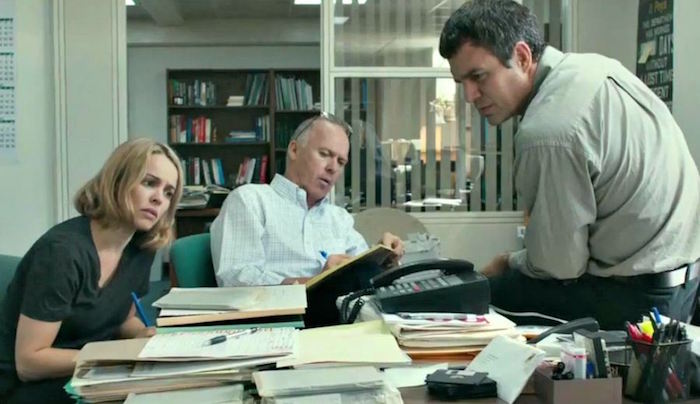
Previous years:
A Guide To What’s Actually The Best Picture 2014
A Guide To What’s Actually The Best Picture 2013
A Guide To What’s Actually The Best Picture 2012
A Guide To What’s Actually The Best Picture 2010
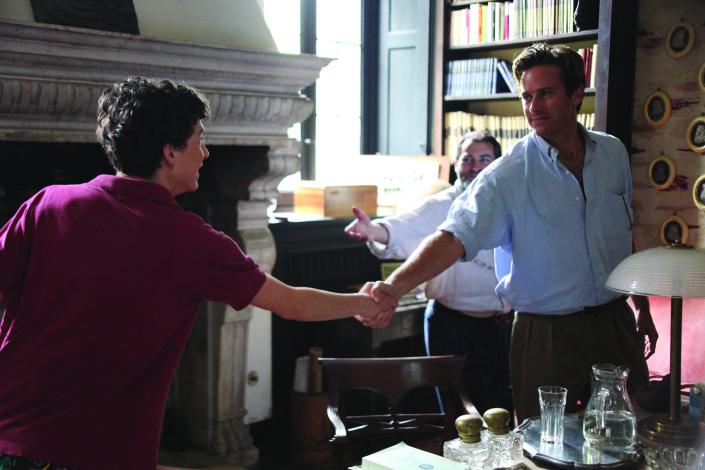 The Pitch: “One does a whole painting for one peach and people think just the opposite – that particular peach is but a detail.” — Pablo Picasso
The Pitch: “One does a whole painting for one peach and people think just the opposite – that particular peach is but a detail.” — Pablo Picasso